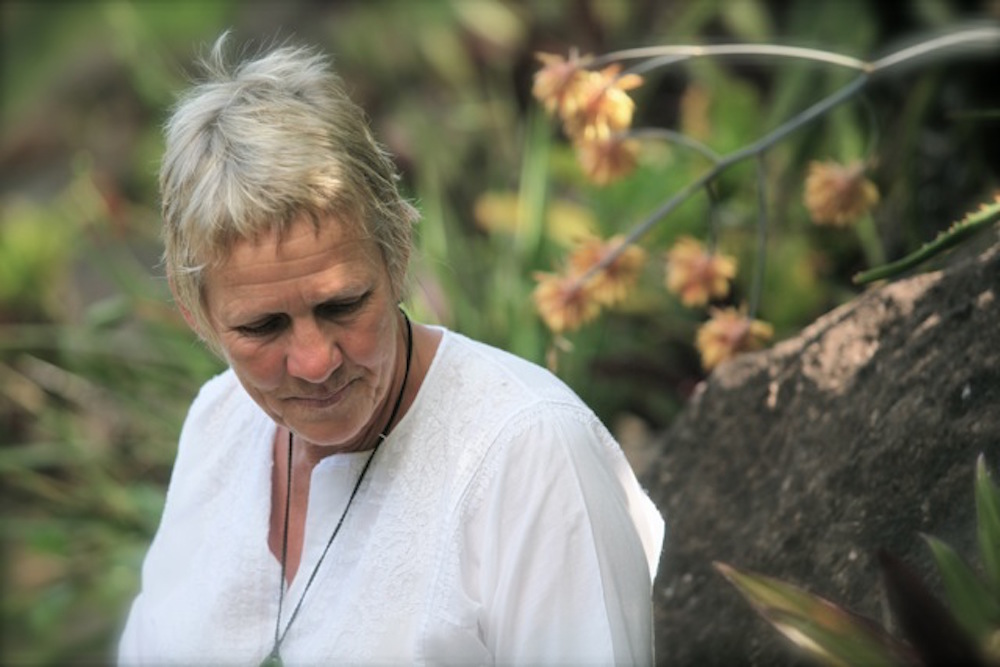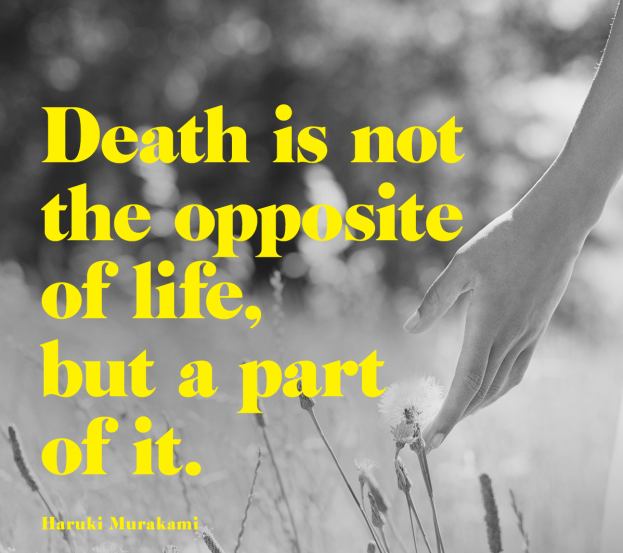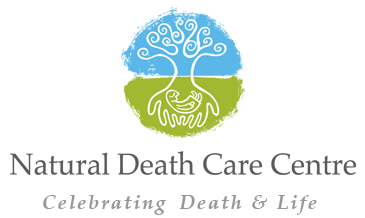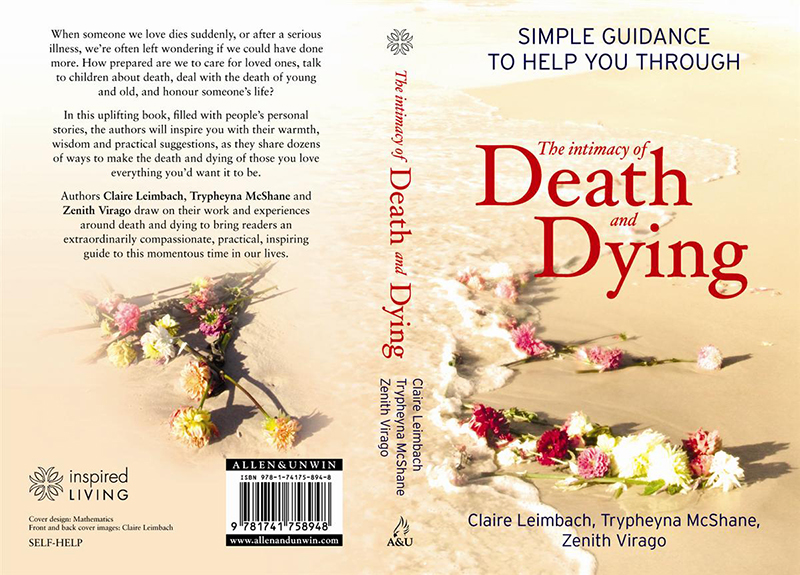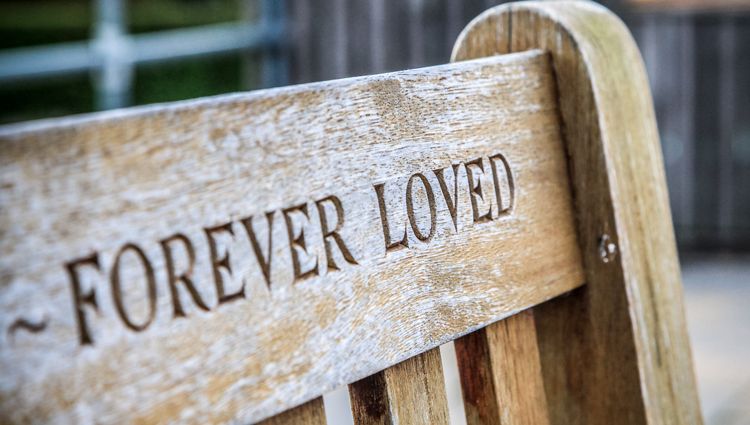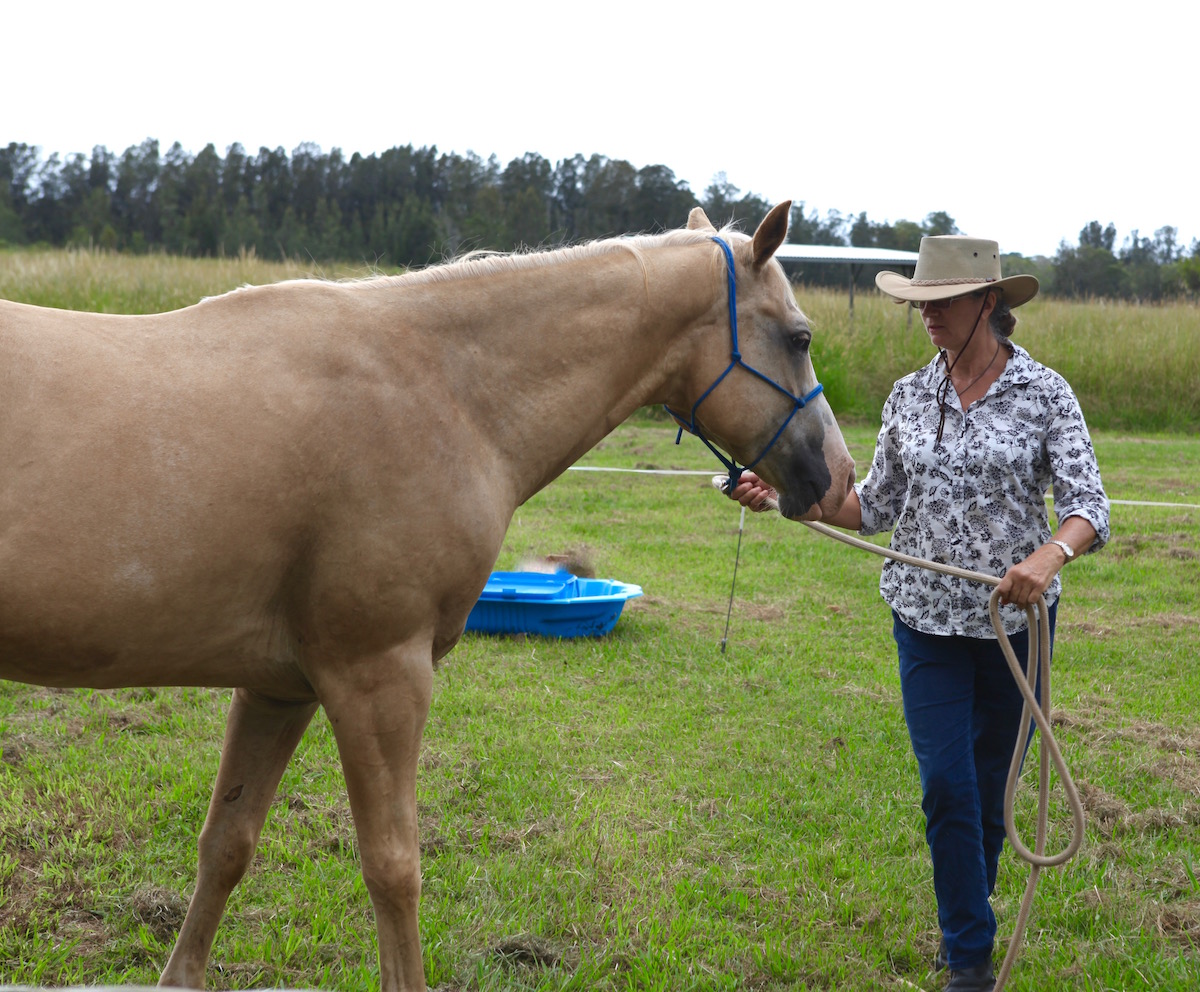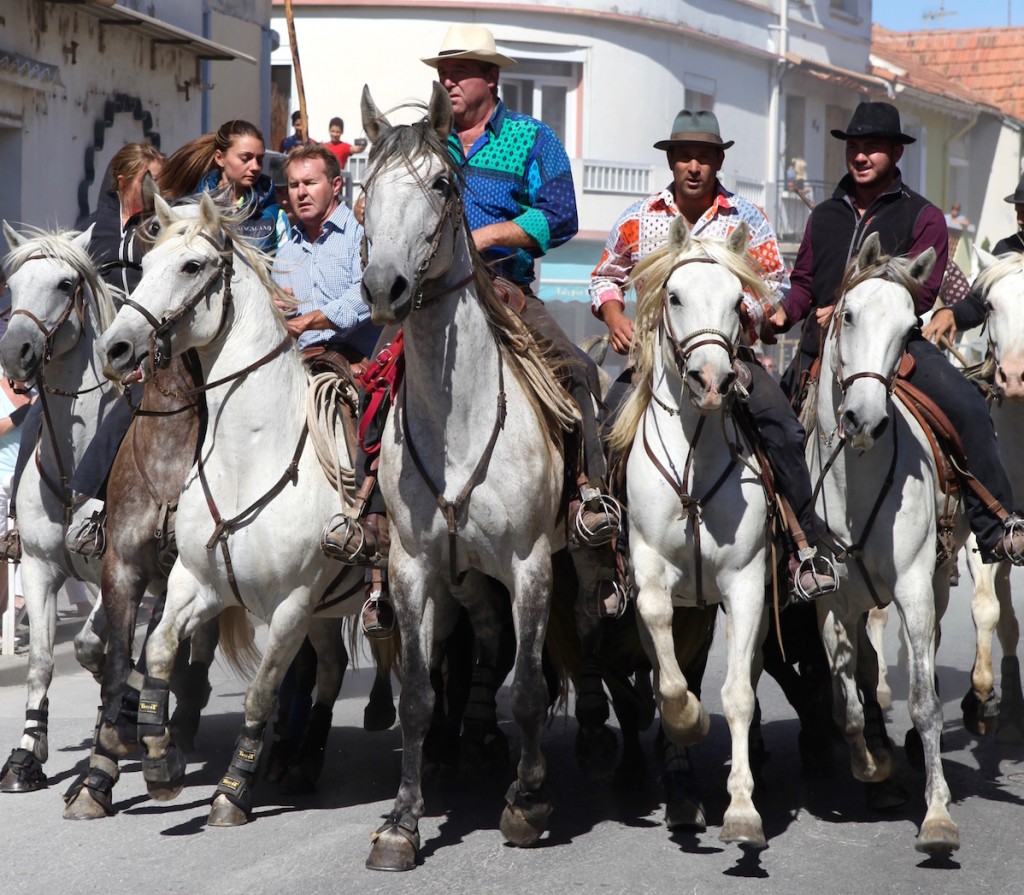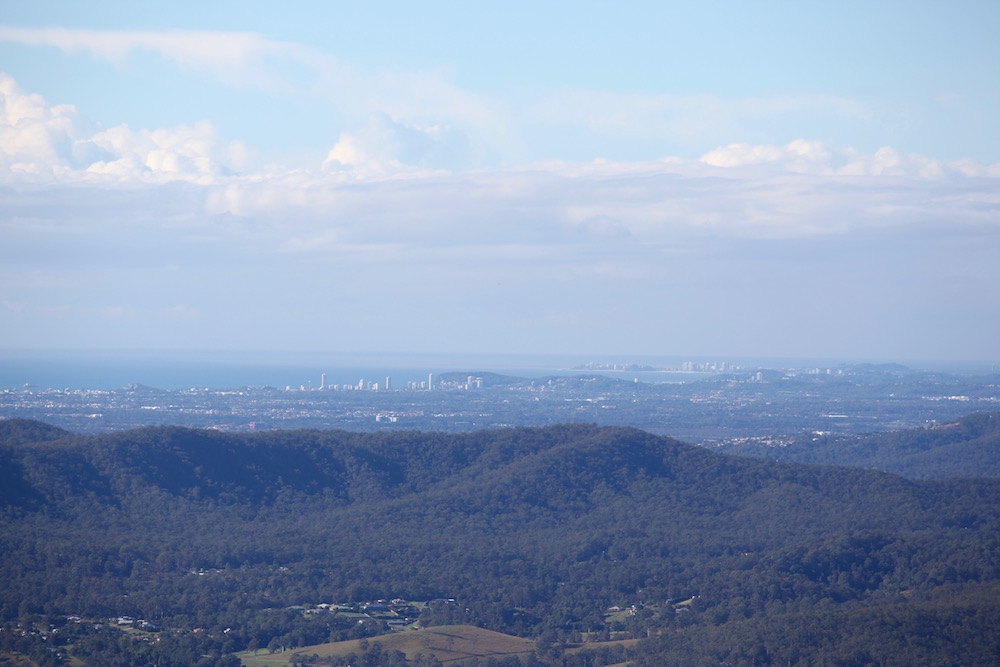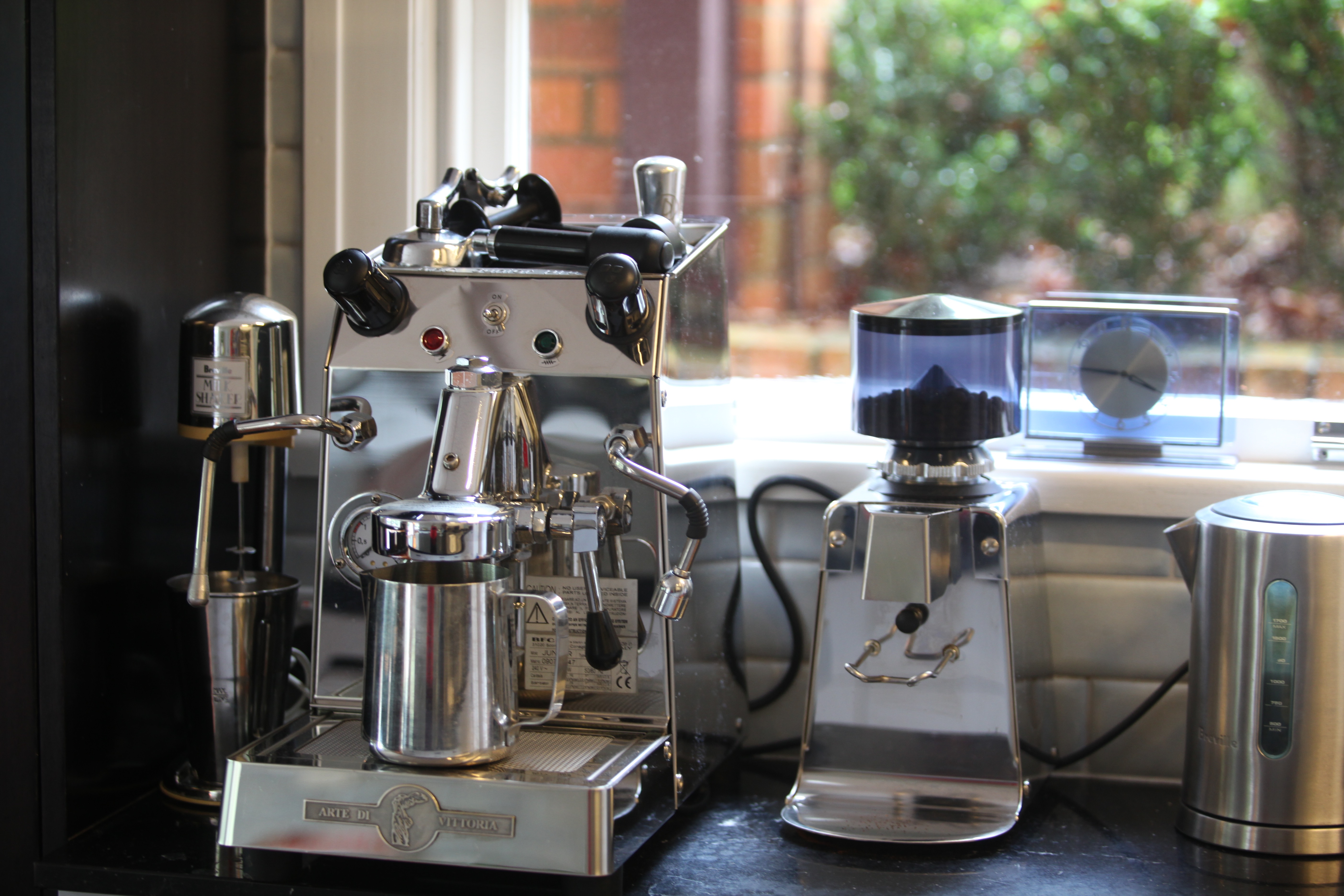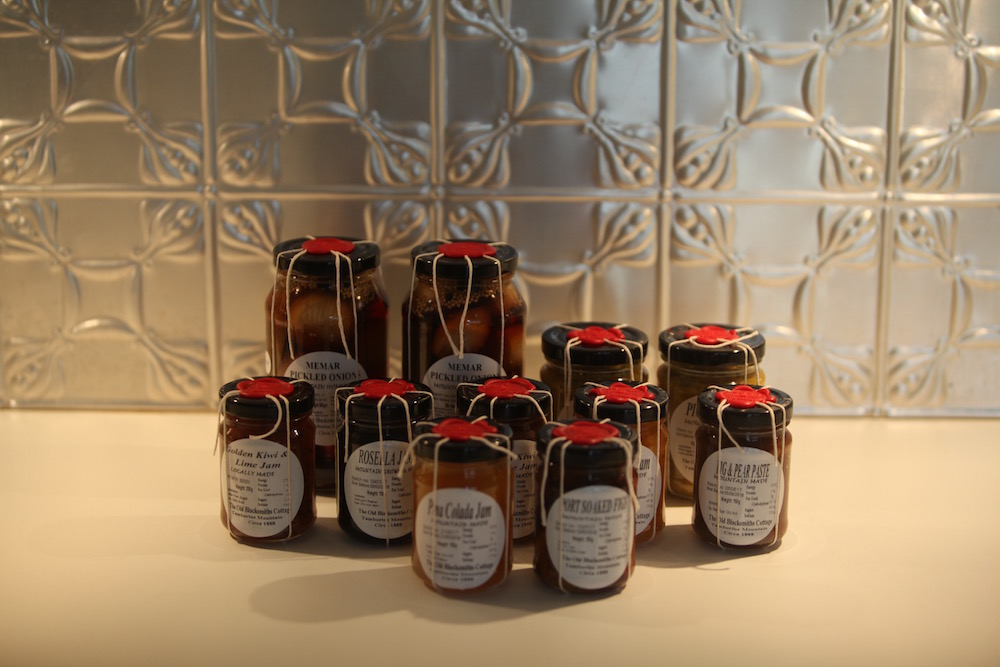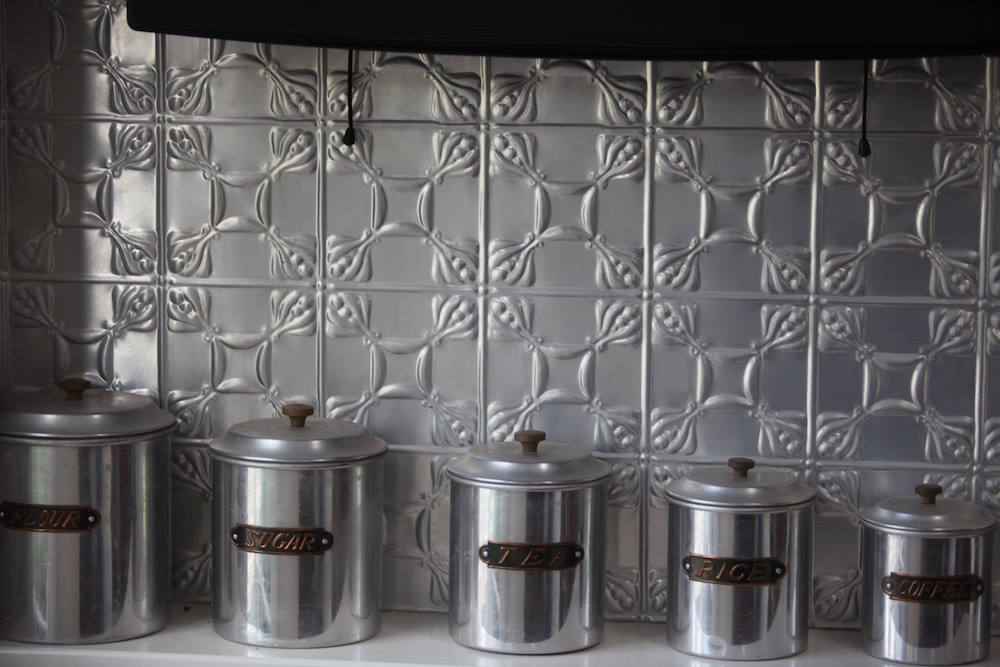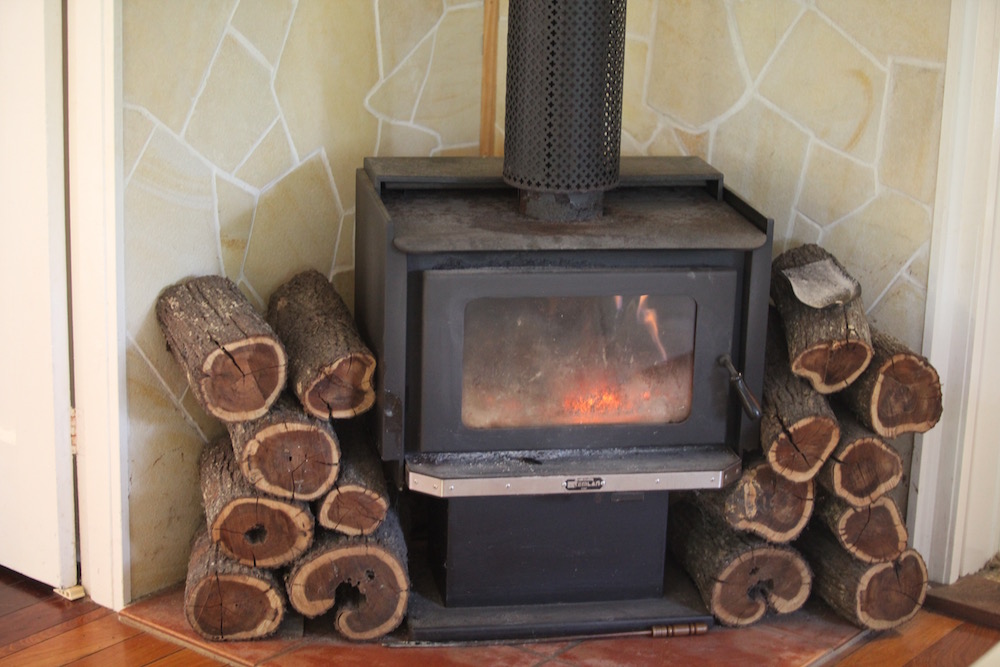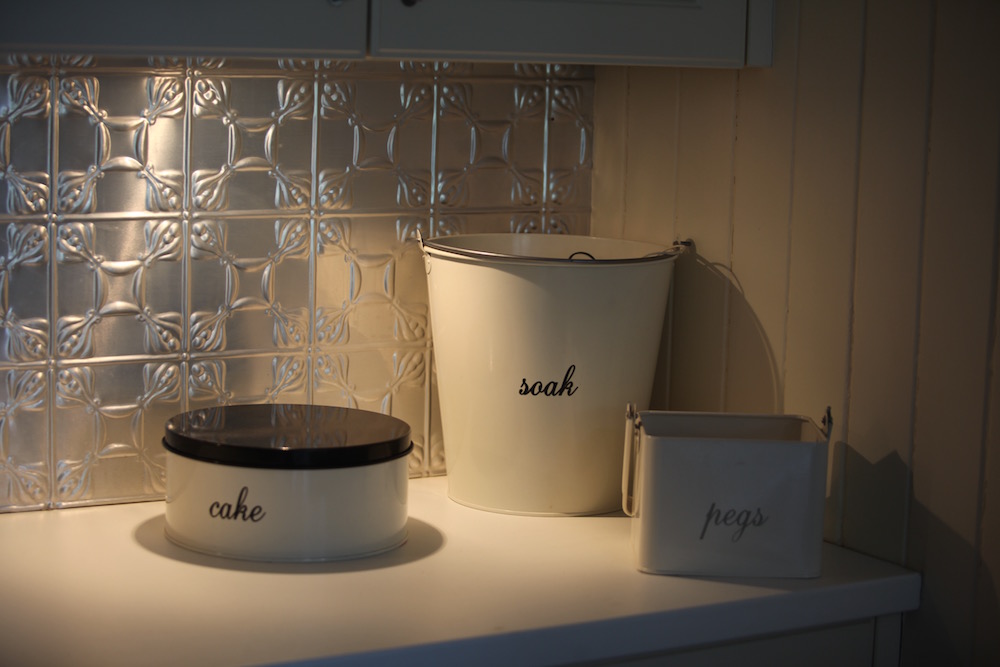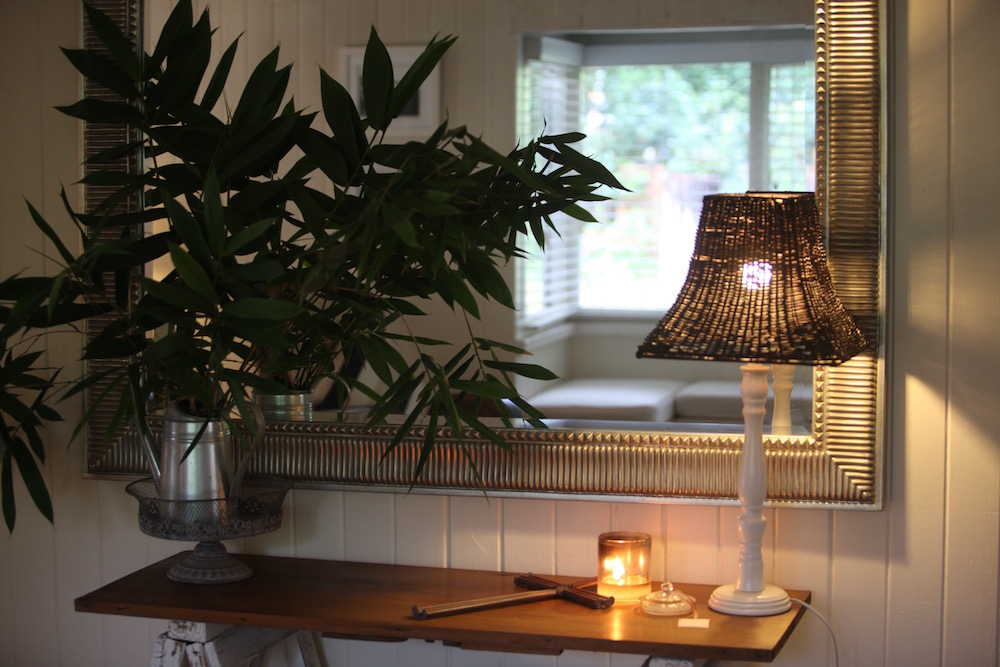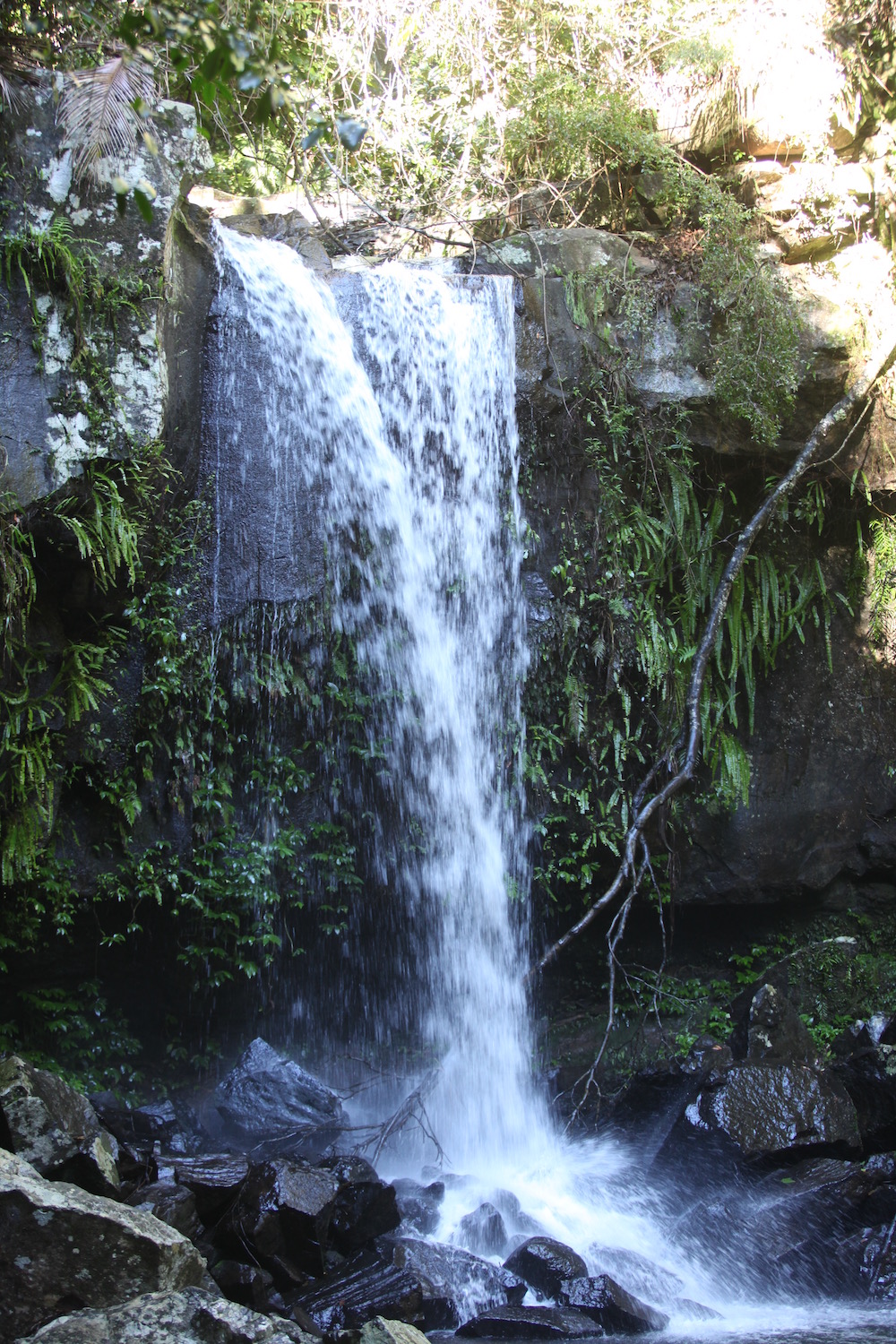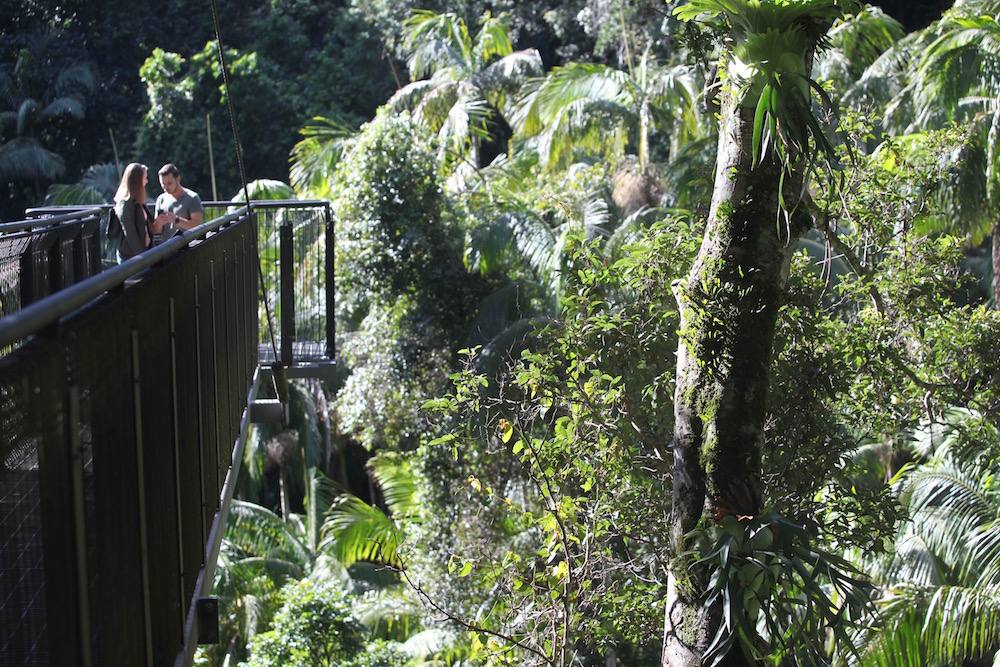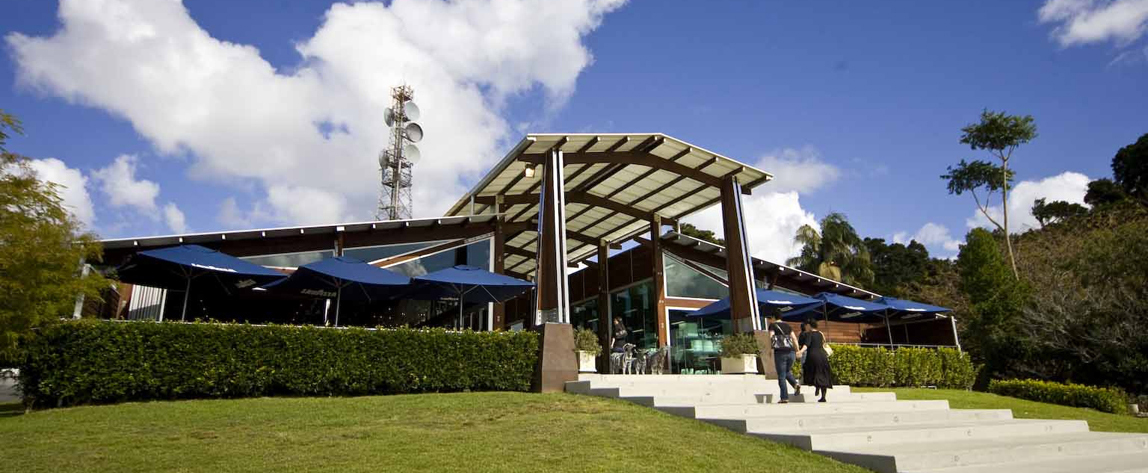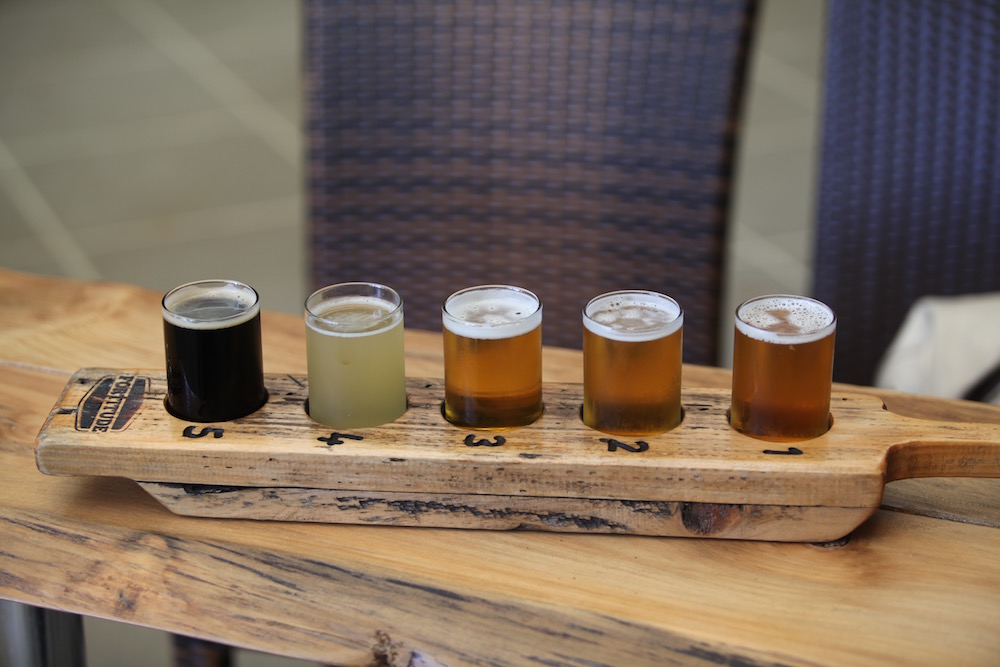The post Zenith Virago – taking Deathwalking to the world appeared first on .
]]>‘I’ve worked with dying people, death and loss for nearly 25 years, it has been an incredible experience, exciting and humbling – my learning has been profound, giving me a deep love and appreciation of the mystery we are all a part of.
I use the term Deathwalker to describe my role. I am walking alongside or accompanying the dying person or the family as they all walk towards death and beyond. It incorporates doula work, which is becoming more common of late. My work is all about empowering the person and the family to die as well as they can, and to have a healthier bereavement.
It wasn’t a career path I was expecting to take, nor did I have a calling like many people who work in this field. Life and death called to me, I said yes, and let it take me on a journey, an adventure, an awakening. As it transpired death has been my greatest teacher. Here’s how it began, since that’s the question people ask me the most.
My life was diverse, rich, full and lots of fun, I was heading for another birthday, something I always celebrated with those I loved and those who loved me. I felt acutely the joy of being alive, healthy and living life on the North Coast. I had been living in Byron and surrounds for nearly 10 years, it had already been an expansive time in so many aspects of my life.
Moving here in the early 80’s as a young woman I, like so many others was attracted to the beauty of the natural environment, the exquisite ocean and the incredible people and close to nature lifestyle.
I was lucky to be part of the vibrant and growing lesbian and gay community, that also meant I had many friends who were living and often dying with HIV/AIDS. It was an epidemic and generally meant a slow decline, watching young vibrant men, age and diminish into old skeletal men, supported by friends, but only some families due to stigma and prejudice.
Like many people who come here, I was beginning a spiritual exploration, quickly I realized I was attracted to people who held a certain quality, a kindness, a stillness, it took me a while to fathom they were all people who had a strong spiritual path, many of whom were Buddhists.
One of those was my dear friend Sylvia Morrow. Sylvia died early one morning in her garden as the result of an embolism. Sylvia was doing a regular yoga practice in the garden, Richard, her husband had gone to the local shop for milk, and her daughter was in the kitchen. They rang my home to let me know. In one sudden and shocking moment, along with all those who loved Sylvia, my life changed.
After my partner came to my Byron office to tell me the news, I drove to be with Richard, and later went with him to the local hospital morgue to formally identify her body. Whilst I was there, as I stroked her head, and had a silent internal conversation with her, expressing my love and my shock…. I became aware of a hazy jet like stream of transparent energy, coming from her head, through my hand, which had come to a gentle rest in its stroking.
In my niaviety I imagined it must be her spirit leaving, I quickly turned to Richard and Sarah, and the two Police people in the room, but they were all occupied… so I decided to just enjoy it, I had never felt anything like it, I guessed it was a magical phenomena, something sacred and profound, in all my time with so many bodies since, I have never experienced anything like that again.
Many of you reading this may have had a similar experience with your family or friends. Death is surreal and so absolutely real all at the same time, it simply brings you right into the present moment, and you have no idea what the next moment may bring.
As we left the morgue after being with her body, it had been my first experience of a dead person, I heard myself say to Richard we could take care of it all ourselves, did he want me to work it all out? He replied that would be great.
On my way home I called into a local funeral director, he told me everything I needed to know to be able to do it ourselves. Then as a group of friends we did do it all, I completed all the legal paperwork, we collected her body and took it home, built a coffin, washed and dressed her, created a ceremony, and at the end pushed her into the cremator ourselves…. that day was my 37th birthday, and the next part of my life working with death, dying and loss had begun.
Soon after, other people asked me to help them out with their dead people, by doing the paperwork, helping them with the after-death care of the person, explaining what their legal and social rights were, how much they could do, or in the case of sudden death how to reclaim the body and work with the trauma, or by creating and delivering a meaningful and appropriate ceremony. It was an incredibly exciting and ground breaking time, like many people I had no formal training, or familiarity with death I felt like an extreme sportsperson doing the very best I could in whatever situation arose. I established a small charity the Natural death Care Centre to work out of and to spread the information.
How we deal with each death can be quite different, it is like an equation. The factors combine to create a response, the factors are things like these…..the circumstances of the death, how you hear the news, your relationship with the person and your familiarity with death.
It became clear quite quickly that most people in this community and then elsewhere only needed a little bit of information, guidance and assistance, and with that help they were very capable. There was no doubt that we were reclaiming our traditional ways of death and afterdeath care. People were able to make decisions, participate as much or as little as they wanted, and when the body had gone, the wonderful part was they felt OK… often they weren’t griefstricken, the being involved had helped them move through the experience in a way that they could feel good about, it was part of their healing. We were all in it together, and some of those death and ceremonies were truly transformational.
It felt as if as a community we were really cutting edge for more natural death and dying practices in Australia…we were simply returning to a more traditional way of end of life practices – we were creating a deathstyle that complimented our more natural lifestyles.
Many of the sudden deaths meant the family were in shock, some even traumatised, especially when someone close had ended their life by killing themselves. Others involved small babies dying at birth or shortly after, some were young children or teenagers, many by misadventure. I was learning on the job – I felt that I could only do my best, and I was all there was. I also felt that I was doing for others what I would want someone to do for me.
People who were dying invited me to come and be with them or their family, to help them plan their dying or death, or to help them plan their funeral. Their most popular opening lines were “I’ve picked the music for the ceremony,” or, “I don’t want it to be sad, I want it to be a celebration.”
This was courageous dying…it was an honour to accompany people in their process, to offer up my legal, practical or spiritual knowledge…this gradually grew in to a large extensive body of work and wisdom, some of these people were incredible teachers for me. I feel now that when I respond, speak or train people, we all come to be of assistance, and I have an embodied learning thanks to them.
To convey to people what is possible, along with many people sharing their personal stories, I co-wrote a book, The Intimacy of Death & Dying, and more recently I was the subject, along with members of our community, of an extraordinary independent documentary, Zen & the Art of Dying. I have now been working in end of life work for nearly 25 years, and teaching for 20 of those.
During that time I kept thinking people would wake up to dying and death and the benefits of exploring, discussing, being prepared and planning, so they could die well. One of the great spin offs was discovering that sex can be a practice for dying, and how the human body is designed not only for life and birth but also for death.
That moment is now here… there are so many books available now, many are personal memoirs by the dying people or the left behind partner, others are full of guidance and tips to help you through the process. There are many stories online and different ways to do death are much easier to find.
For the past 25 years Byron has been leading the way… and I feel we are still at the forefront and have created a hybrid holistic way to do death well, to offer continuous care for our dying, to tend to the bodies of those who have died, creating meaningful and appropriate ceremonies, and experiencing a healthy and natural bereavement.
Many people do not even use a Funeral director at all, with a little guidance and assistance they complete the paperwork and all the body care themselves.
Here are some of the aspects for you to know
( depending which state you live in and the individual circumstances involved), you can:
- Do it ALL yourself, you don’t need a Funeral director,
- Complete all relevant legal forms
- Keep the body cold at home for up to 5 days
- Take the body home after an Autopsy
- Build your own coffin
- Use a cardboard, wicker or bamboo coffin
- Transport the body yourself
- Create and celebrate the ceremony
- Book the crematorium and deliver the body
- Bury on private ground
- Bury in a shroud
- Cremate in a shroud
All of my involvement with so many incredible and courageous people in this community and beyond, who wanted to die as well as they could, those trying to make sense of the unknown and new place they found themselves in, or who wanted to share the best possible experience with their family and friends, so that they entered into an easier bereavement.
For the past five years, I have been travelling nationally and internationally to deliver a body of teachings in a 3 day Deathwalker Training, a comprehensive and exhaustive sharing of my wisdom, knowledge and skills to help people wake up their inherent capacity, enhance their existing skills and knowledge, and ask as many questions as they can think of. These are intimate workshops filled with a mixture of people, most have been looking for something honest and informative for a while.
As I now enter my 60’s, the last part of my life, death can not be far away as I am way past the tipping point of being closer to my death than to my birth, I find myself in the joy of the finite. I feel so very grateful to have lived a long life through all those different and interesting stages.
I find myself, smiling at small things, laughing at absurdity, being more quiet and still, dancing and partying just as fully. Resting in an ease that everyone around me knows what needs to happen should I die suddenly as we have had all the discussions and I have completed all the best paperwork, left clear and loving letters for my family…. My affairs are in order as they say.
But most importantly I have lived my life as best I can, lucky enough to have always loved aging, I have befriended death, letting it walk alongside me, even holding hands like a best friends or a lover, it is as rich as it can be, as I enter my eldership, I am so full of love for my life that I am thinking to put a body of work together about the Integrity of Aging Well and living a meaningful Eldership as we live the end of our lives.
For more information on death, dying and the Deathwalker Trainings in Australia see our website for the Natural Death Care Centre.
Deathwalker, EO Natural Death Care Centre
Zenith Virago : Deathwalker. Celebrant. Author. Trainer. JP.
(+61) 0427 924 310
Transformative Rites of Passage. Weddings & Funerals
Conscious & Integrated End of Life & After Death Care
Consultations
zenithvirago.com <https://zenithvirago.com>
Deathwalker Trainings: <https://naturaldeathcarecentre.org>
Co-Author of The Intimacy of Death & Dying: <https://naturaldeathcarecentre.org/publications>
Documentary Films: <https://zenandtheartofdying.com> <https://tenderdocumentary.com.au>
The post Zenith Virago – taking Deathwalking to the world appeared first on .
]]>The post Equine Facilitated Magic appeared first on .
]]>I was only five years old when I first noticed that horses made me happy. My best friend, Sally, a couple of years older than me, had a perfect first pony, a grey Welsh Cob called Lucy, as safe, sound and sane as they come, and Sally was kind enough to let me spend hours with them both, grooming, or walking beside them, or even riding, or doubling together.
Looking back through the mists of time, there’s something that stands out about those early memories – and that’s the fact that the absolute best times we shared were not necessarily the riding ones. The times spent talking down by the river while Lucy munched contentedly beside us; the times when we would tuck Lucy up in her stable, out of the bad weather, and just hang in there with her, plaiting her mane or simply sometimes just leaning against her, inhaling her warm horsey smell. All three of us just about as content as it’s possible for children and pony to be.
Fast forward almost sixty years and 12,000 miles away from the country of my birth, and here I am, with a group of like-minded women having just taken part in an Equine Facilitated Learning Level 1 course – in order to become practitioners of this groundwork based course, in which there are three participants – the client, the horse and the facilitator.
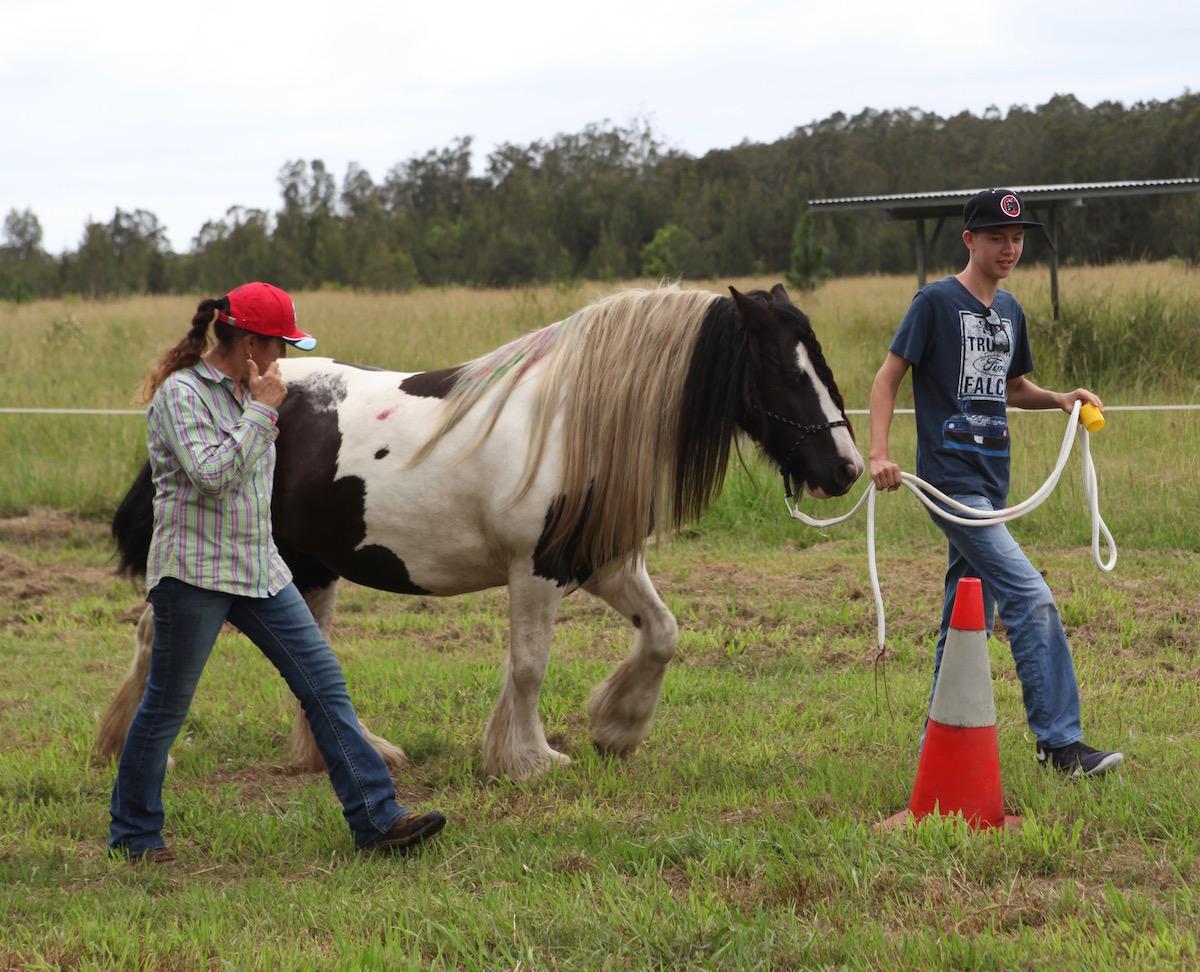
The client – 16-year-old Winter, the horse, Gypsy Cob Sweetcheeks and facilitator-in-training Sue Whatley.
After many years of horse rescue and rehabilitation, natural horsemanship and the teaching of my own methods to children, friends, family and volunteer helpers, I’m not new to the world of equine therapeutic modalities, but I decided to do this course for a specific reason – I wanted to have a qualification which will allow me to do something I’m passionate about – to set up horse groundwork sessions for our Save a Horse Australia rescue horses and for those who might benefit from time spent hanging out with horses, in which ‘magic’ is the key ingredient.
It was an intense four days! The clinic was conducted by Elaine Hughes, the guardian of EFL in Australia. Originally from the UK, but now based in Victoria, Elaine has had many decades of horse experience, and has studied with many of the ‘natural’ trainers, but it was a meeting with Frank Levinson, the founder of EFL, that prompted her interest in the program. When she and her family of four and two-legged friends moved to Australia, Elaine partnered with Sally Francis to create AEFL. Elaine teaches the clinic with her two off-siders, Louise, otherwise known as Irish, and her partner Dave.
What I witnessed as we moved through the four days into a deeper understanding of the horse and human bond, culminating in working with ‘real’ clients on the last day is that EFL seems to substantially deepen people’s understanding of their personal issues and feelings, and that some level of fundamental relaxation occurs.
But the careful – almost invisible – guidance of the facilitator also allows children and adults to experience, as Elaine says: “a huge surge in self-esteem and confidence when they realise they can create boundaries and direct a pony or horse to move in a particular way.”
Children who have stopped speaking; people with anxiety and depression; children and adults with physical or intellectual(or both) disabilities; people who are simply afraid of horses and want to learn not to be – all of these scenarios (and more) were presented to us over the four days, either in theory or practice with role play, or clients. It was an incredibly fulfilling experience for all of us to take our already existing horsemanship skills and our rapid immersion into EFL and to witness the ways in which we could help both ourselves, the client and the horse develop what I can only describe as an elasticity of brain and body. We learnt quickly to allow the space for the session to evolve into whatever is most fulfilling for the client and the horse!
The next step in becoming an EFL practitioner for us all is ten hours of sessions with clients, so watch this space!
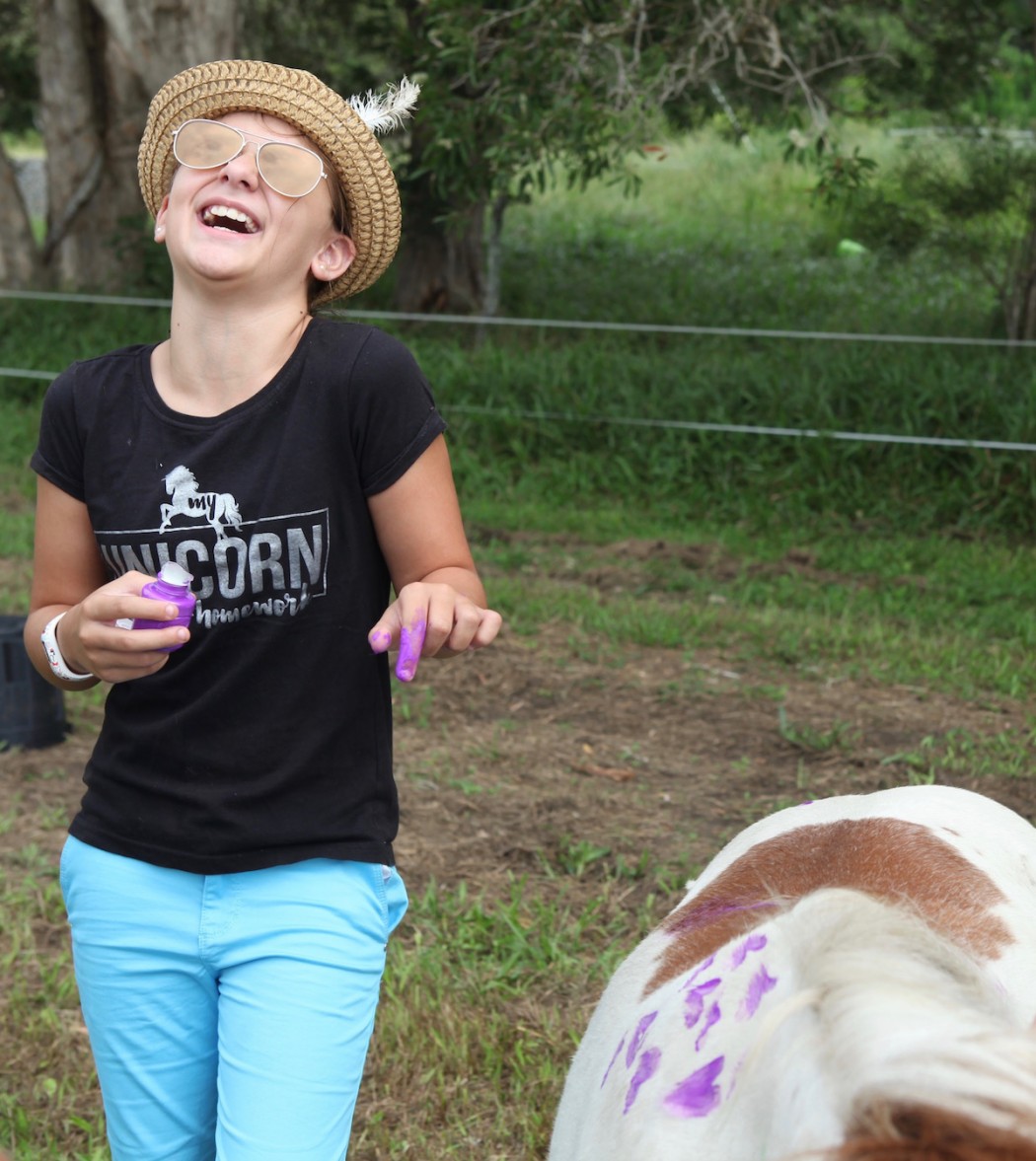
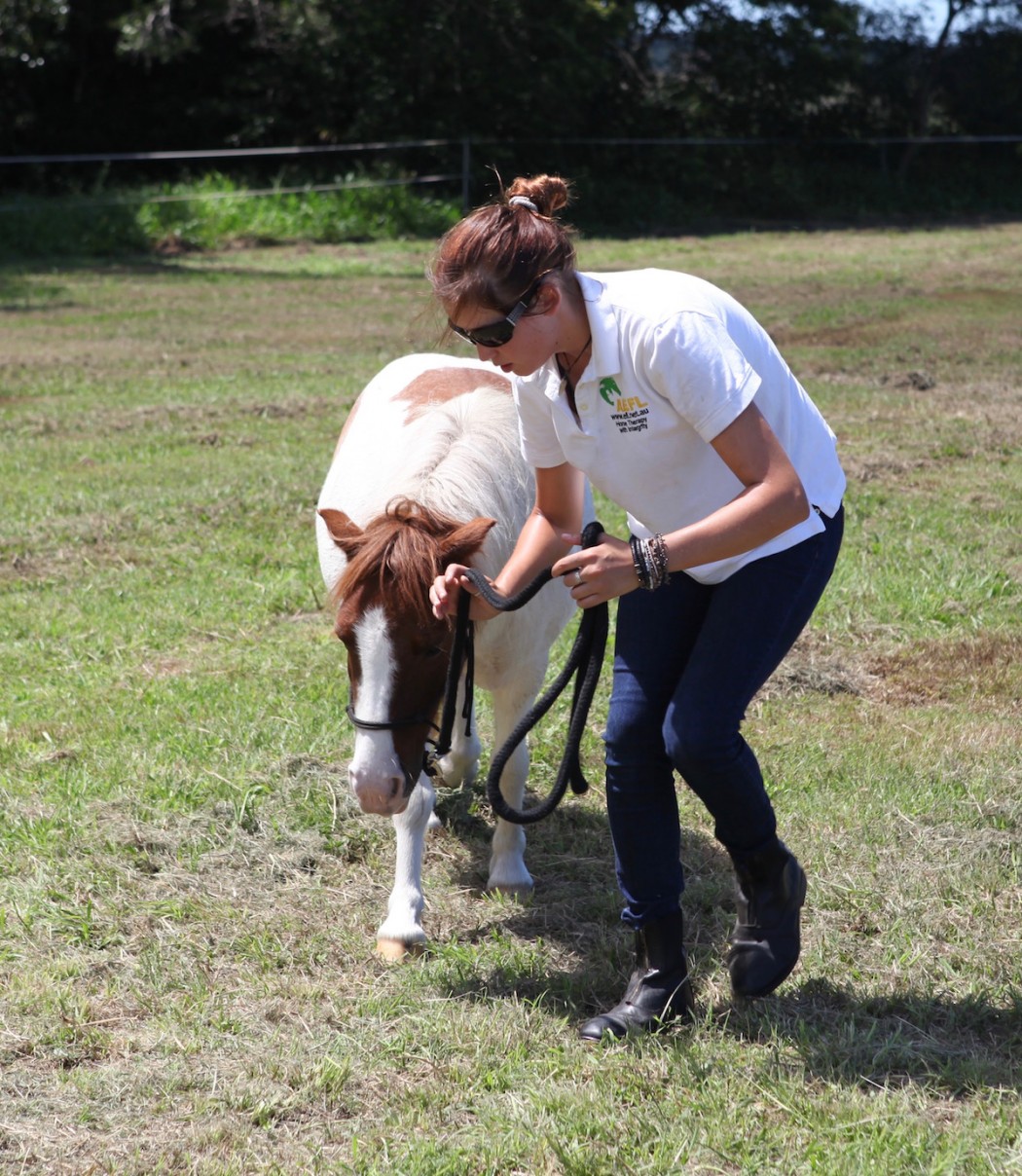
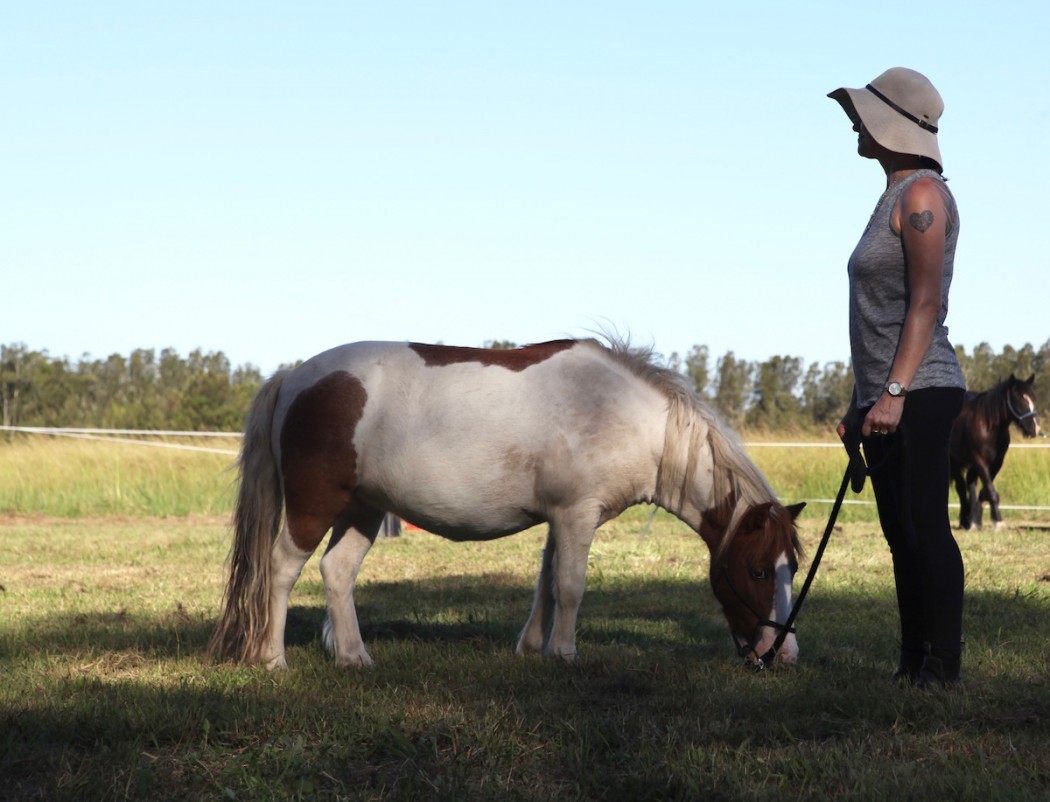
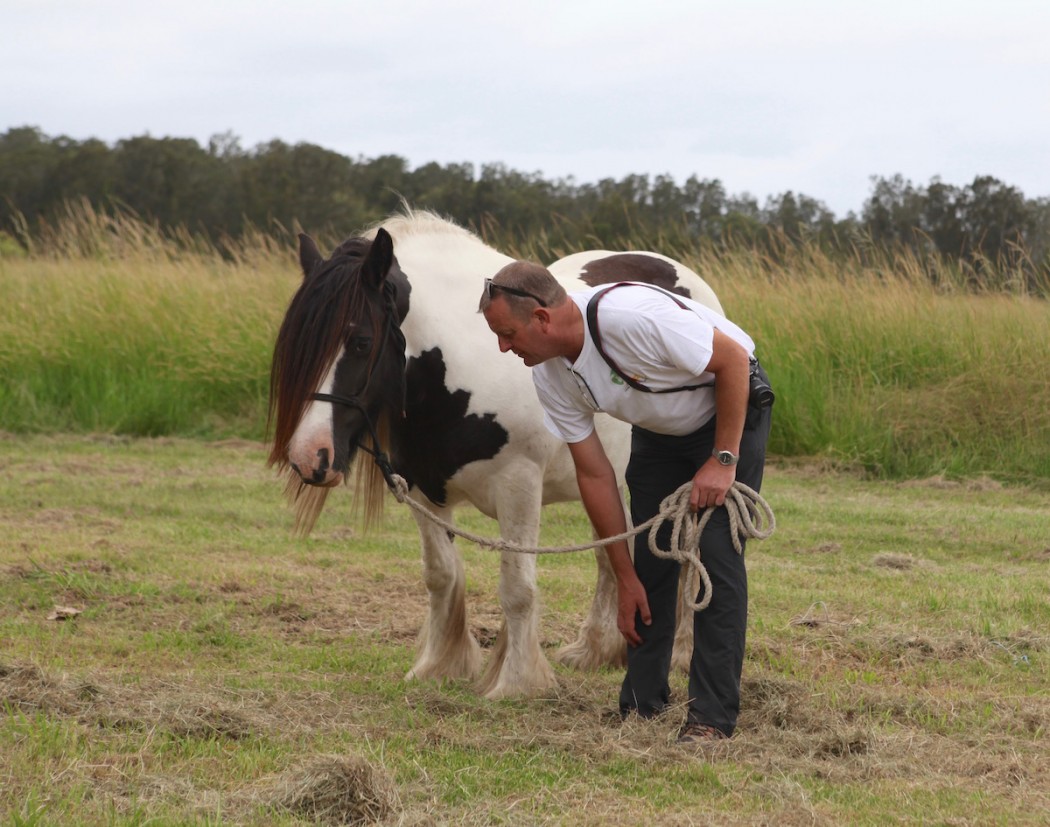
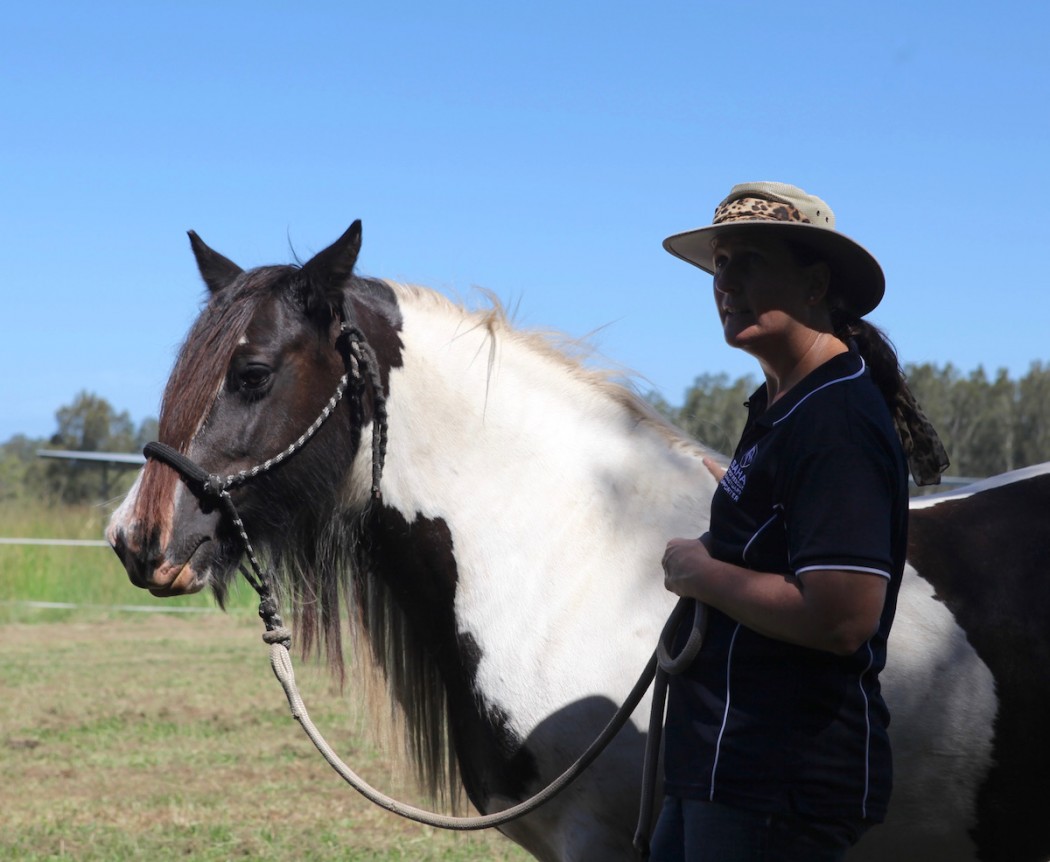
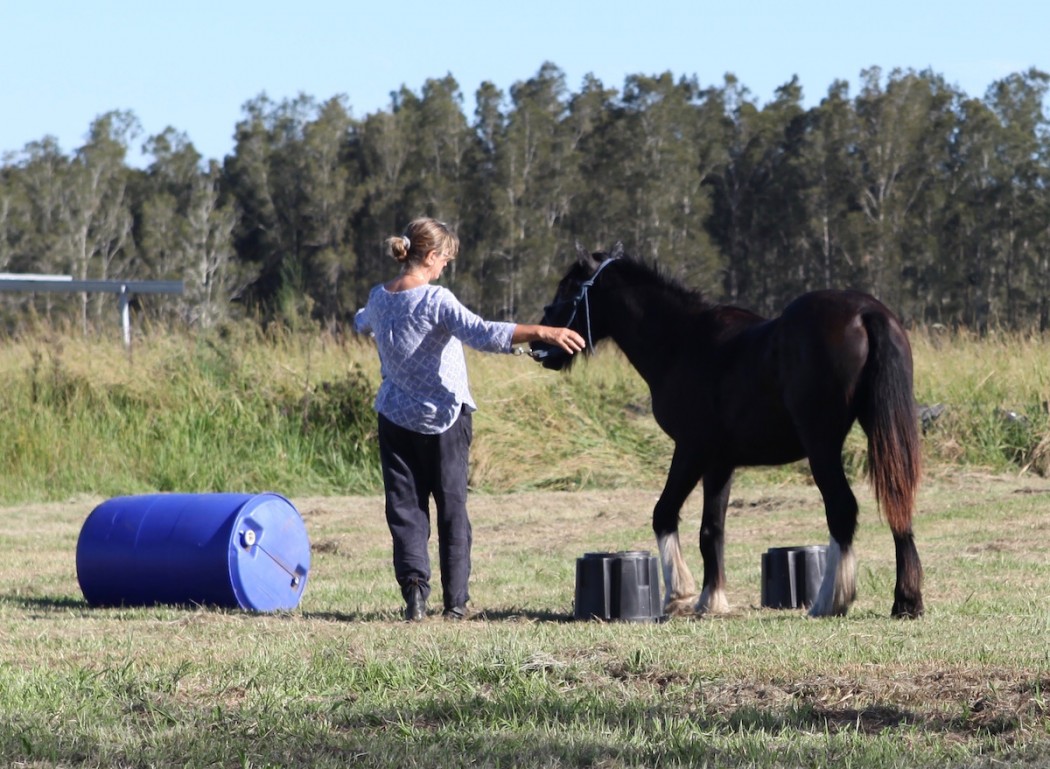
Captions: Sometimes it’s fun to just ‘paint a pony’. Irish aka Louise, gets down to Nina’s level. Magnolia hanging out with Nina. Dave shares a moment with Sweet Cheeks, Cathy Binz my fellow SAHA trainee facilitator. The little yearling Maddie and I enjoy some bonding time.
For more information on EFL go to: https://www.efl.net.au/
AEFL is the Platinum Training Provider for IICT – International Institute for Complimentary Therapies.
Candida Baker is President of Save a Horse Australia and editor of HubVibes. This column first appeared in the March edition of HubVibes
The post Equine Facilitated Magic appeared first on .
]]>The post The Past and the Present at the Lascaux Caves appeared first on .
]]>After a month in France in September, my very last ‘horse’ adventure was at the ancient Lascaux Caves in Montignac. I’d seen these magical caves on endless documentaries, and I’d always wanted to see them in person – and to continue learning about the relationship between horses and humans. The cave paintings – and you will have all seen the images I’m sure – are from 17-20,000 years ago, and feature a wide variety of animals that are recognisable today – including aurochs, bison, reindeer and horses – lots and lots of horses!
The caves (other than one original at Rouffignac which you visit in a train, passing ancient bear nests on the way) are exact copies of the originals and in the case of Lascaux 2, which was the one we chose to visit, only 100 metres from the real cave’s entrance. The caves had to be copied because unfortunately the amount of people going through them once they were discovered caused almost immediate damage to the paintings. The copy itself took seven years to complete, and the sites are incorporated into the World Heritage list.
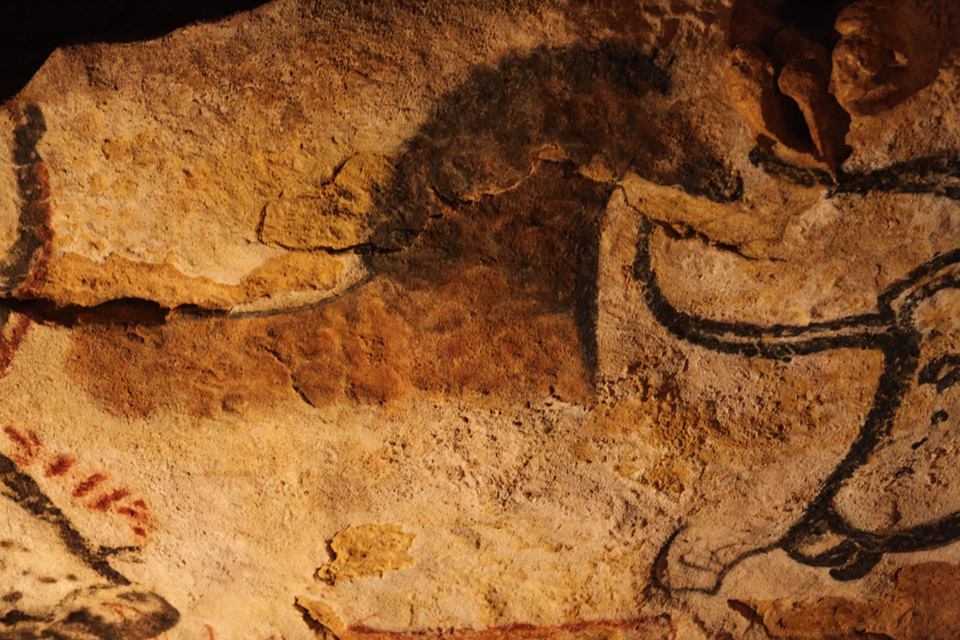
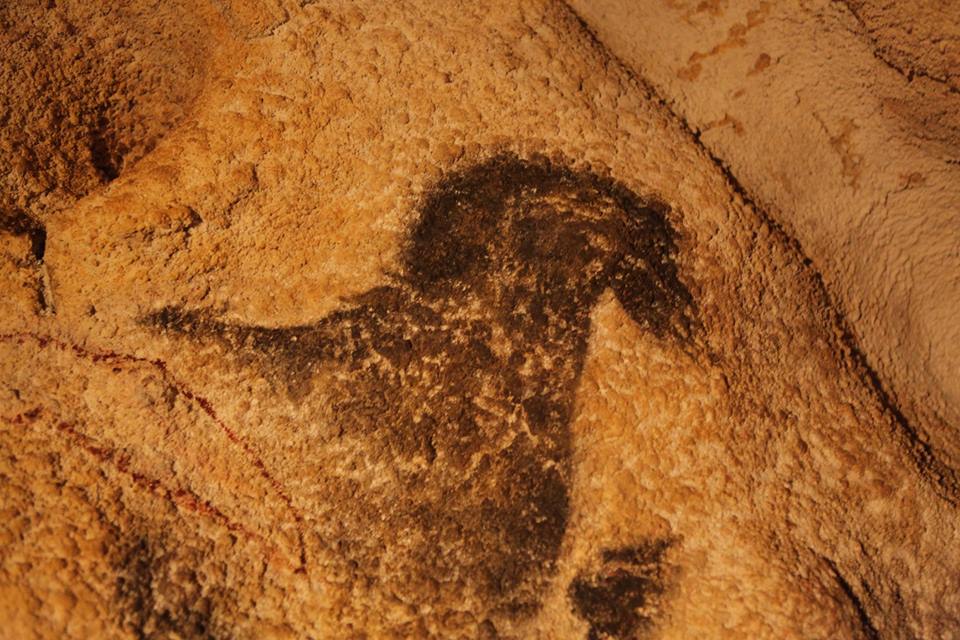
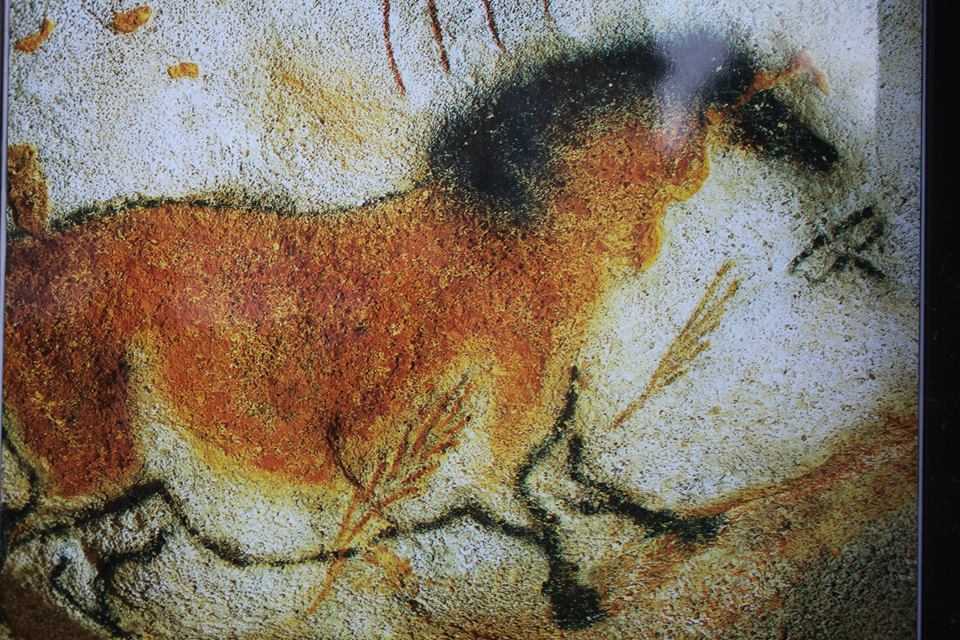
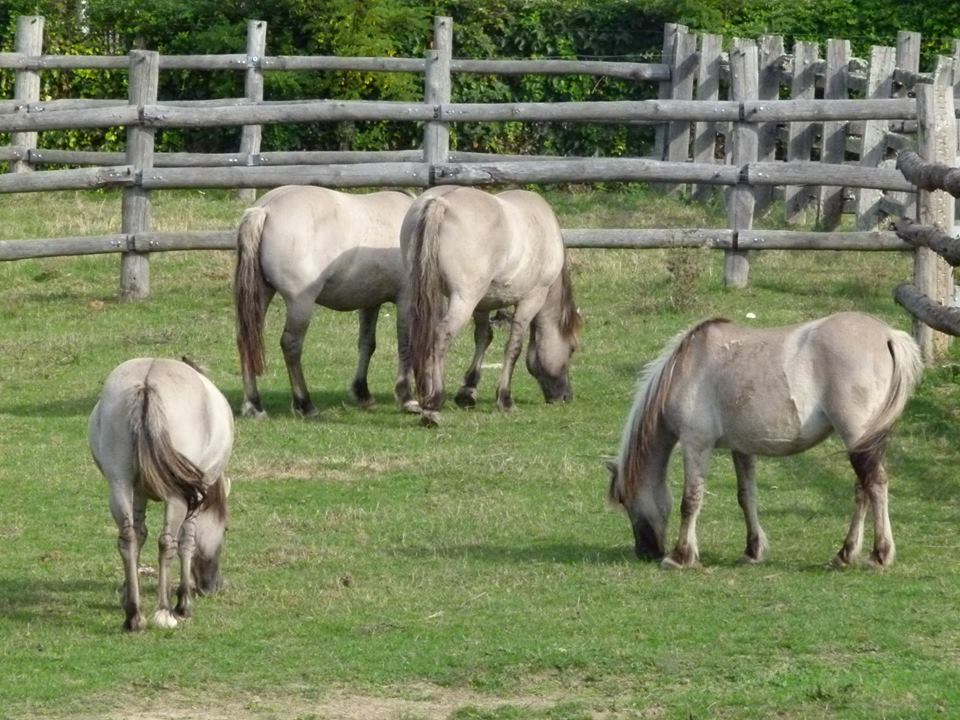 .
.I can’t even begin to describe the feeling of being surrounded by these wonderful images of horses – and the energy in the paintings. But THEN – even better, we visited a wild-life park nearby where they have a Przewalski’s horse – or Dzungarian horse, a rare and endangered subspecies of wild horse (Equus ferus) native to the steppes of central Asia.
It was extinct in the wild but thanks to a careful breeding program it has no been reintroduced to Mongolia. Most “wild” horses today, such as the American mustang or our own https://www.viagrabelgiquefr.com/ brumby, are actually feral horses descended from domesticated animals that escaped and adapted to life in the wild.
The Przewalski’s horse has never been domesticated and remains the only true wild horse in the world today. The horse is named after the Russo-Polish geographer and explorer Nikolay Przhevalsky (Polish name: Nikołaj Przewalski) and I’ll let you be the judge of how similar the little chap (who has donkeys for company at the moment) looks to the ancient cave paintings.
The grey ponies also tell a wonderful story because the Tarpan – also known as the Eurasian wild horse or simply, wild horse, is now extinct. The last mare believed to be of this subspecies died in captivity in Russia in 1909, but in the 1930s, several attempts were made to develop horses that looked like tarpans through selective breeding, called “breeding back”. Historians of the ancient wild horse assert that the word “tarpan” only describes the true wild horse but at the same time, the breeding program has been successful enough to produce these lovely grey ponies that bear a very distinct resemblance to their ancient ancestors.
So what I did glean from seeing the Camargue horses, the Cardre Noir dressage horses, and the ancient cave drawings? It yet again reinforced for me how the relationship between horse and humans is one of – when it’s good – a chosen relationship, on both parts. Finally, if you do happen to have an interest in horse history I can highly recommend Susanna Forrest’s The Age of the Horse which I reviewed for the Times Literary Supplement in the UK. It’s a fascinating account of the history of the horse from around the world. https://www.the-tls.co.uk/articles/public/horses-tale/
The post The Past and the Present at the Lascaux Caves appeared first on .
]]>The post Horses and humans – and the shadows between appeared first on .
]]>There’s something so enticing about the drive to The Channon. Enveloped by green rolling hills, the small village offers visitors an eclectic offering of outings – from bushwalks up to Protestor Falls in the Hills, to the much-loved Channon market on once a month.
For its size, The Channon punches well above its weight in the art stakes with its beautiful Teahouse gallery in the tiny village, and with a large population of practising artists.
Artist Andi Neilands had a change of direction a few years ago, when she left behind a long career at TAFE teaching IT and 3D modelling and animation to study art. This show, Virtual Shadows, is the result of her advanced diploma with an emphasis on light and shadow to create edges, form and volume.
It’s a cohesive exhibtion – it could perhaps be called humans and horses, since the works are of men, women and horses. But it’s the women who have the relationship with horses, the men are incidental and somewhat exterior to the main body of the work. If a shadow of Neilands former career shows itself, it’s in the precise techniques she’s used to replicate the works in various media, so that a drawing becomes a painting, becomes a bronze. (Many of the works are available as prints or reproductions.)
One small area of the exhibition concentrates on one peson – artist Ken Johnson cialis 20mg prix who acted as a personal mentor to Andi – particularly whilst she was coming to grips with the art of sculpting. Johnson is portrayed in a bust and on paper, and Neilands pays tribute to Johnson’s emotional depths in all three works.
One of two of the most expensive work in the exhibition, a bust of Bucephalus, Alexander the Great’s warhorse, is carved out of white carrara marble from the Michelangelo quarry. It has an almost transluscent quality, and the proud horse’s head takes an easy pride of place. Interestingly its ‘shadow’ are smaller heads printed in plastic by 3D printing. From the most natural, to the most unnatural material on the planet. Both, these days as seemingly durable as the other.
The messages behind the mediums are subtle. Less subtle but interesting to a fellow horsewoman, are the works depicting the sometimes almost erotic, always highly emotional relationship between women and their horses. My personal favourite is a small clay maquette of a horse lying down a woman sitting by its stomach with her head on her lap, and the horse’s head gently turned towards her. The title of the work is RUOK? and for me it’s a reminder of how, although as a human it’s my job to look after my horse, every now and then in my dark days my horses have turned to look after me.
The imperative for an artist behind a work of art is always fascinating. As the viewer what do we see? As the artist, what did the creator intend? Perhaps the most personal of all is a bust of Neilands’ father – My Father, My Hero – drowned at sea in a boating accident in 1957 having saved the lives of Neilands, her sister and her brother. The bust of her father held great emotional signifcance for the numerous descendants of the tribe at the opening – reinforcing the notion that in any form of art it is the story that is contained within it that is the emotional connection to the outside world.
I will be interested to see the expansion of this artist’s work.





Virtual Shadows is showing at The Channon Teahouse & Gallery in Standing Street until December 10.
For more information on her works go to andineilands.com or contact Andi on [email protected]
The post Horses and humans – and the shadows between appeared first on .
]]>The post Sue Spence’s Horses Healing Humans goes international appeared first on .
]]>It’s not difficult to imagine Sue Spence as a child – she’s talking to me about her childhood in the south island of New Zealand, growing up as the horse-obsessed child of non-horsey parents, and the lengths she would go to go riding. “It really didn’t matter whether it was sleeting, snowing or blowing a gale,” she recalls, “I would get on my pushbike and cycle off to my horse in all weathers. It was the only thing that made me truly happy, and for many years I competed as a show jumper.”
But then trouble reared its head in the form of an unexpected illness. “I’d moved from New Zealand to Australia,” she says, “to Queensland, and I was leading a pretty busy life. I have ADHD, and so for me it was nothing to teach six aerobic classes and then go home and go for a ride, but really I was running on adrenalin. I was the kind of rider that they describe as having a ‘hot’ seat – I could make even a quiet horse jump for the moon!’
But although she felt as if she was coping, in fact 15 years ago her life was rocked to its foundations after she was diagnosed with early breast cancer, and it was recommended that she undergo a double mastectomy and reconstruction. “After 30 years of living life at blistering speed – running fitness centres and show jumping, I realised I had to do things differently,” she says. “I moved to a quiet place in the country, and I began to my training in horse whispering, which meant I needed to use a calmer energy.”
Not that it went so well in the beginning. “The first time I tried to get my horse to walk quietly beside me, I was so pent up with anxiety from the cancer and running my gyms, that I was just like ‘go…go…go!” she laughs. Suffering from acute anxiety after the breast cancer, she had to learn to become calm and still. “Nobody had ever taught me that,” she says, “and my ADHD combined with my natural tendency towards fitness just meant I had no idea how to drop into a still, quiet place.”
Sue’s obvious sense of humour shines through as she tells the story of her immersion into the skills of natural horsemanship. “One of my most amazing mentors has been Ken Faulkner,” she says. “I did a clinic with Ken, and I remember I was having a little trouble getting my horse to do something I wanted him to do, and he said, ‘the problem is you have a lot going on inside.’ I was so annoyed. “What do you mean?” I shouted at him, “I’m perfectly relaxed!!” But of course, I was nowhere near relaxed and he spotted it immediately. It was a life-changing moment and it took a horseman to bring me out of my anxiety,” she says, still – I have to say with what you might call a fanatical show jumper’s slight tone of disbelief.
But after learning the tools of the trade, and discovering what a massive difference it had made to her, Sue’s evangelism for a cause kicked in. Her training as a personal trainer and lifecoach became invaluable when she began to run groundwork workshops for women with issues around boundaries and self-esteem. Some women would break down doing her simple ground exercises, because they had never realised how their body language undermined their verbal language.
The whole point being of course, that natural horsemanship, in whatever manner it is taught, is a physical language that allows the human to become a horse ‘leader’, in a non-threatening, strong way, where the verbal and physical language they use is congruent.
But for anyone who has ever thought that you needed a ton of space, horses and equipment to create what has now become an international program with licenses provided to approved practitioners in three states of Australia, you can think again! Her business, Horses Helping Humans™, and her registered charity, the Horse Whispering Youth Program, started out with exactly the same horses she has all these years later – two Shetlands, Mindy who is 28 and Yogi, her 17-year-old son, Larry a 11-year-old rescue mini-pony who lost an eye and Sue’s beloved 28-year-old Quarter Horse,
“People think that when they come to my place they’re going to see something grand, and they get here, and I still have my little motley mob on less than an acre,” she laughs. “But as the program progressed and we began to work with the Department of Youth Services in Queensland, we were able to apply for funding, so now I have a little grandstand, a shade sail over the roundyard and an outside toilet,” she says proudly.
(At the time as building up a business, there was also the family to consider, and if you happen to be a Bacholerette follower you may have noticed Sue’s name used in a completely different context – as the mother of Gold Coast entertainer Apollo Jackson, who was recently a hot contender on the show, and has inherited not just his mother’s energy levels, but also her love of horses.)
For those who might assume that at some point along the way strategies, business-plans and trademarks would have been part of her thinking, she’s still in awe at how the growth of the program has pretty much taken care of itself.
“I can’t even begin to tell you how much serendipity is a part of what I do,” she says. “It’s as if the universe wants HHH out there. Just for one example – when I ran a corporate workshop in Rockhampton one of the practitioners was a business man who told me I needed to go home and protect my IP. I didn’t even know what was! Then later on he asked me again if I’d done it and when I said no, he basically told me I had to do it. I was terrified because I didn’t understand it at all, but then I said to him, well, can I set the license up the same way they did with Les Mills Body Pump licenses, because I can do that – and so that’s what happened. Everyone is trained to a certain level, it’s easy to run and it’s all been based on the Les Mills model because I was a fitness instructor!”
In Rockhampton more synchronicity took place when the local Heritage foundation stepped into support the program. “The people who wanted to start it had no space, and no horses,” she says cheerfully, “so that was going to make it a little difficult, but the Heritage park offered their heritage horses and use of the park and so we were able to set it up.”
In New Zealand it was a magistrate that decided the country needed the program for repeat offenders, and that is exactly what it is being used for. “In Victoria, on the Mornington Peninsular, the license has been brought by a very high-level Parelli practitioner who has an indoor arena, an outdoor arena and a huge American-style barn,” she says, “so really you can see it’s just spreading its wings in whatever way it can.”
The license fee includes all training manuals, the training of a facilitator, public relations, visits from Sue to various local businesses to promote the program and connection to youth service and other government agencies. “What we do is that the facility that is going to run it is fully operational with clients booked from day one,” she says, “people are 100% set up to run it by the time it opens with full backing from their community.”
One of the reasons why the program is so popular with the Department of Youth Services is that they can measure its success. “The essential point of the program – no matter who else it is used for, is that it’s aimed at disadvantaged and at risk youth,” Sue explains. “After thousands of teenagers have gone through this program, they are able to track the success of it by the number of teenagers who have gone on to university, or improved their performance at school, or stayed in school when they were in danger of dropping out – that’s why we have such a good reputation, and why it was so important to make the licenses are done properly.”
Horses Helping Humans also has a connection with Griffith University whereby interns do up to 50 hours volunteering as part of their degrees. “For us to have volunteers who are studying psychology, criminology or business is priceless,” says Sue.
All the students the program works with are referred by youth and family services, school chaplains or counsellors, mental health organisations, child protection, homeless youth and the Justice Department.
It perhaps wasn’t surprising – or only surprising to Sue at any rate – that a publisher became interested in her story. “When they first rang me they left a voice message,” she says, “and I was so busy that I hadn’t even got around to to calling them back, but a friend who’s involved in writing heard the message and said to me, ‘Sue, Pan Macmillan are one of the biggest publishers in Australia, call them back NOW!’”
She did, and a contract followed – but for Sue whose ADHD does not allow her to sit still for long, writing the book was just too hard. “I can’t write a shopping list without getting bored,” she says. “I had no hope with the book.”
Enter serendipity again. “I was at the hairdressers and I was talking about my problems with the book,” she says, “and this woman popped her out from a dryer a few chairs down, and said, ‘Sue Spence! Is that you?’” It turned out to be an old friend of mine who was now working as a transcriber – and she offered to come and transcribe my words for me, so I could walk up and down as much as I liked while I dictated my words, and she would write them up. I think we did the book in record time!”
The book gained Sue Australia-wide publicity that brought in new supporters, and even more ideas for how the program can expand into the future. In the meantime the first Horses Helping Humans conference is taking place soon on the Mornington Peninsular, and Sue is in huge demand as a public speaker right around Australia. I wouldn’t be surprised if you could make that right around the world within a few years – a bit of serendipity allowing!
This story first appeared in the December issue of HubVibes – to subscribe to the free monthly magazine go here: equestrianhub.com.au/publishing/
To find out more about Sue Spence and the work she does, go to: Horses Helping Humans . In 2014 Sue Spence received a Women In Business Awards for Community Dedication and in 2016 she was awarded a Business Award for Creating Change.
The post Sue Spence’s Horses Healing Humans goes international appeared first on .
]]>The post The White Horses of the Camargue appeared first on .
]]>When I was a five-year-old, living in London, my father went on holiday to France, and visited the Camargue region.
Knowing already what his horse-mad daughter would want as a present he brought me back a book – Crin Blanc – (English translation: White Mane). It was black and white still shots from the 1953 short movie, which told the story of a young boy who tames a wild white stallion, Crin Blanc, so infuriating the locals that they hunt the pair, until the boy and the horse choose to disappear forever into the sea. The film won numerous awards including the short film Palme d’Or at the Cannes Film Festival.
Along with Black Beauty, My Friend Flicka, Tam the Untamed (any Australian readers remember that now very politically incorrect book?), Champion the Wonder Horse and a bit later The Silver Brumby, Crin Blanc became one of my all-time favourite books. It was in French, but the story was pretty self-evident, and from the time my father gave it to me, I was determined that one day I would go to the Camargue and ride a horse. (In fact as I child I was determined I would go and tame a wild stallion and bring it back to England, but dreams do become more realistic as we get older!)
So there I am – 57 years (yes you read that correctly) later, cantering along on Tato, or actually more like galloping along on Tato, a sturdy 14.3hh perfect representation of his breed, in the company of the manager of the ranch I’ve chosen to ride at. He’s on his part-bred Camargue/Lusitano five-year-old who still thinks every stick is a horse-eating monster, whereas Tato, fortunately has seen it all before. Despite that, though, he’s definitely forward, keen to go, soft-mouthed, and easy to ride.
There’s a minute, as we gallop along the edge of a small river, which has a herd of young horses, foals and mares on one side, and on the opposite side a large herd of the famous Camargue black bulls, where I actually have time to think – “This is the perfect moment.”
I have had, as the French say, ‘la chance’, because the threat of wet weather has kept everybody else away. Thanks to having spent a year working in French stables as a teenager, my ‘horse’ French is up to par enough so that at least Patrick, the manager of La Cabane du Daladel, and I can communicate on all aspects of horse care. Patrick is training his young horse, Crom, for bull-work, one of the main disciplines for the Camargue horses.
It’s a sad fact that there are actually no herds of true wild horses left anymore, but the reasoning behind the decision to allow registered breeders was to stop in-breeding or accidental diluting of the bloodlines.
In 2003, three registration categories were created to identify Camargue horses: one the pure Camarge – horses registered in the stud book, foaled and identified in the Camarge, branded before weaning and from a ‘manade’, a small semi-feral herd of which only 45 exist; the Carmarge hors manade – horses registerd in the stud book, foaled and identified in the Camargue from the select list of private breeders and the Camargue hors bercau – horses registered in the stud book, foaled and identified outside of the Camarge to registered breeders.
Thanks to these measures, the ancient blood-lines of the Camargue horses, considered to be one of the oldest breeds in the world, will be safe forever. For thousands of years these horses have lived in the delta of the River Rhône, a wetland marshy area which these days is a massive national park.
Patrick tells me that the Camargue horses in the main live a: “good life”. Those brought in for regular trail-riding work – which of course if the fate for many of them – are lucky. “They work from April to October,” he says, “and then they go back out into the marshes.”
And when he says marshes, he means marshes. When we are not trotting or cantering along the sandy paths between the lakes and wetlands, we are picking our way through water which varies from a few inches deep to well up to Tato’s stomach, so that we are almost swimming and my feet are somewhere around Tato’s head trying to keep my boots dry!
What is extraordinary to me is that not only do these horses cope with this environment, they positively thrive on it. Thanks to the fact that the water of the Rhône is sweet rather than salty, the somewhat unappetising looking stringy grasses are apparently full of nourishment, and the marshes too are full of herbs and different sorts of grasses. Patrick tells me working horses are fed once or twice a day, but normally just with hay, and are usually let out at night to graze. I have to say I did not see one skinny horse during our four-day visit there.
I don’t know about other ‘ranches’ but at La Cabane du Duladel when a horse reaches retirement age from its work, it’s put out to pasture with the foals and mares, until, as Patrick elegantly puts it, “one day we find him asleep forever”.
So one thing (as a vegetarian) that concerned me of course, is the ‘bull’ work, but in the Camargue, it is literally that, rather than bull-fights. The ‘guardians’ – horse-riders – use their horses to round-up the bulls, but also in fetes and street events throughout the year where the bulls are galloped with through the town, while young men jostle for the privilege of hanging onto a bull’s horns! It sounds highly dangerous, but in fact the street work with the bulls and horses is much safer than the ‘tauromarchie’, or bull-fighting in the arenas where the young men have to remove a string tied around the bull’s horns, and where a fresh bull is brought in every 15 minutes.
The best bulls live to be up to 40 years old, and some are so famous they even have their own statues.
At one point, as we stop and gaze at a herd of cows with their calves, their horns just beginning to take on the beautiful lyre-shaped points they grow as adults, Patrick looks pensive. “I think,” he says, “in the Camargue we love our bulls even more than our horses.”
Watching him sit Crom as he dances his way around the marshes, and how he gently reassures him, I think – or hope – he’s probably teasing me.
The family herds in the Camargue are so important that when we ride into the middle of the massive marshy area where the mares and foals are eating, all Patrick has to do is click his tongue and call and they all make their way towards us, gently saying ‘hello’ to our horses and generally showing the calm temperament that their breed is known for right from the start.
Some researchers believe that the Camargue horses go back as far as the small Paleolithic Solutré horse which was hunted for meat. The horses were appreciated as riding mounts by the Celtic and Roman invaders, and blood lines of the Iberian horse have been found in their DNA. In fact, the original Spanish ‘Jaca’ horse was probably a cross between the Celtic pony and the Camargue. It was later improved by crosses with other horses brought in by the Moors, and because of its cross to the Jaca its DNA found its way into the Americas where breeds such as the Chilean and the Criollo show some of the characteristics common to the Camargue horses.
So what are the characteristics? My little Tato was a brilliant example of a pure Camargue horse – their average heights being from 13.3hh to 15.2hh maximum. He was broad and stocky with a short neck, deep chest, obviously strong legs, and a beautifully full wavy mane and tail that I had plenty of time to gaze at. His ears were small and forward – and as Patrick said, “he loves his work”. His trot was even and flat, and his canter too. With the modern version of a working Camargue saddle on he was so comfortable I could ride all day, and his back end was as well-muscled and round as any Quarter Horse.
Over thousands of years, their hooves have adjusted to the marshy ground, becoming hard and tough with very flat wide soles. Put one of our thoroughbreds in there and I swear they’d have an abscess and thrush in a week or two!
The two hours seemed honestly to pass in ten minutes – we passed swans, and water-birds of all kinds, an otter in the river, and began to make our way peacefully home.
There’s only one problem with ticking something off your bucket list, I thought as I reluctantly dismounted – it means it’s unlikely to happen again – but it’s an experience I’ll certainly never forget. I hope little Tato enjoyed it too, and that he too, when he reaches retirement age will live out his days in his marshy wetland home.
We’d chosen to say in at the Mas du Notaire winery in Gallician, in the heart of the Camargue. The beautiful old farmhouse has several forms of ‘gites’ – accommodation – attached, including access to a kitchen and refectory. We were there on the exact weekend that they were reliving the glory days of summer, and bulls and horses seemed to be everywhere in the town – in fact everywhere we went in the Camargue the white horses seemed determined to find me – we saw them out in the marshes, making their way across roads and rivers, and in every town we drove through.
The towns too, are famous for their beauty – Arles, of course, where Van Gogh lived for a year, and was at his most productive, and a special mention for the amazing cathedral in Saintes Maries de la Mer, dedicated to Saint Sarah, the patron saint of the gypsies. Another non-horsey high-point was definitely the ornithological park only a few kilometres out of Saintes Maries de la Mer, with its flocks of pink flamingos.
The Camargue is truly a magical place – if it isn’t on your travel bucket list, I suggest you add it, you won’t regret it!
A version of this story first appeared in the HubVibes ezine: https://equestrianhub.com.au/publishing/
For trail riding contact: La Cabane du DALADEL
Patrick Fargier
D 58 – 30600 MONTCALM (between Aigues-Mortes and les Saintes Maries de la Mer)
Tel / Fax 04 66 73 52 08 – 06 20 78 03 74
www.chevaux-listel.camargue.fr
For Mas du Notaire go to: https://shop.famillerambier.com/en/lodging/guest-houses-of-the-mas-du-notaire-in-camargue/
For the Ornithological Park go to: https://www.parcornithologique.com/https://www.parcornithologique.com/
The post The White Horses of the Camargue appeared first on .
]]>The post Tranquility plus on Tamborine Mountain appeared first on .
]]>It seemed like a good idea at the time. Get away for a winter weekend’s camping, somewhere deep in a national park. No phones or computers, just bush-walking and meals cooked over an open fire. But we hadn’t counted on the rain in the Northern Rivers continuing for weeks – months, even. The last desperate call to a bed and breakfast in the Border Ranges giving us the unwelcome information that the area had received over 200mls of rain in five days. Which was mind boggling to imagine. “It’s a bit wet underfoot,” said Betty, my information source, in a classic understatement.
So what to do? Itchy feet, a free weekend, all dressed up and nowhere to go. Surely I thought, somewhere not too far away there had to be a place we could take time out where we could stay dry? Was that too much to ask?
Then a thought popped into my head. I’d recently driven over the beautiful Tamborine Mountain, and I’m ashamed to say that after 14 years of living near Byron, I’d actually never visited Tamborine, but I do have a friend who lives there. Fiona, I thought, just might know somewhere we could stay, and instead of our wilderness weekend we could swap it for a weekend of mountain village life.
Which is how we found ourselves on a Saturday morning arriving outside the Villa Margaret a gorgeous red-brick home, rumoured to have been designed by Burley Griffin, three-storeys high and surrounded by autumnal vegetation. It was almost magical stepping through the wrought-iron gate with its tinkling bell into this gracious home, which has been lovingly restored by its owners.
The owners have stayed true to the house’s original date of the 1940’s, decorating in an understated art-deco theme which runs throughout the house. We had the house to ourselves for the weekend and for us, the downstairs floor with its bedroom, bathroom, the kitchen and the living room with its open fire-place was plenty of room, but this house is a perfect mountain place for families. Each storey has a bedroom, bathroom and sitting or small kitchen area – the top storey boasts the most incredible views all the way to the Gold Coast, and has its own Juliet balcony; the middle hosts the library and a telescope, a private writing space, bedroom and bathroom, and the downstairs the general living, including a long dining table, and a generous kitchen equipped with espresso machine, and everything you need to cook up a gourmet storm after visiting all the local produce purveyors.
Fiona Porteus, the miraculous provider of the accommodation lives right next door in the Old Blacksmith’s cottage where she makes her range of Old Blacksmith’s jams and preserves, (www.facebook.com/theoldblacksmithscottage/) so it seemed only right to start our mountain adventures with a cup of tea in her beautiful little cottage with its cosy slow-combustion stove, and port-soaked figs simmering on her stove.
The Old Blacksmith’s Cottage – a beautiful renovation of a local landmark.
And so began one of the most relaxing weekends I’ve had in a long time, although it has to be said that we hadn’t exactly escaped the rain, but sitting in the Mt Tamborine winery with soup, warm damper and a fire was just a tad more pleasant than being in a rooftop tent.
We decided that our accommodation was so beautiful there was no point in going back out for dinner so we hunted and gathered at the local supermarket, and headed back to light the fire and settle in.
Googling Vila Margaret didn’t confirm whether Burley Griffin had designed the house, but it did throw up some interesting facts. During World War II the house was the weekend getaway for General Douglas MacArthur, and also for the longest serving Catholic Bishop, the revered Archbishop of Brisbane, Sir James Duhig. Decades later the house became a contemplative retreat for the Sisters of the Canossian.
The history suited the house – its solid exterior with its bay windows and balcony, its generous rooms, and quiet places to sit and read or contemplate, made it easy to let the everyday worries of the world drift away. With its three almost self-contained storeys, it’s a perfect place to stay with two or even three families, and it’s listed on both Airbnb and Stayz.
On Sunday morning we woke to a brave new world – one in which the sun shone so brightly it was almost a shock to the system after our weeks and weeks of rain.
Everything sparkled – the misty Payne’s Grey mountain of yesterday was emerald and blue, with startling splashes of colour from darting parrots and winter blooms. It was a perfect day to explore, and so we did – starting with a modest short walk to the nearby Curtis Falls and the local shops. I’d read about the Skywalk – a metal walkway 40 metres above the ground through the rainforest, and although it did suggest that if it was windy and you were scared of heights, to steer clear of it, on a windless day it was a perfect way to see the canopy. So with one of us (me) praying that the lack of wind would continue we set off on the 1.5km Skywalk, which was everything we’d hoped. From our vantage point in the trees we could see orchids and stag ferns, butterflies and birds, and the hanging trail of vines reaching down, while the trees seemed to be stretching for the light. A creek meandered through the forest floor, and the light was a photographer’s dream. If you only have limited time on Tamborine, I would highly recommend the Skywalk.
Two walks – time for lunch, and where else on Sunday but the Cheese Factory, the uber-cool eatery complete with restaurant, separate bistro, a cheese and wine shop and the cheese-making factory. By 12.30 it was already packed, but we found a table – after a serious amount of cheese-tasting and were joined by Fiona – who introduced us to Meredith Morris, the owner of the Cheese Factory, and Michael Reeves, the cheese-maker. Michael, originally from the UK, emigrated to Oz with a swag of accolades including being awarded the Most Consistent Cheesemaker in the West Country and, most impressively, Best Traditional Cheddar in the world.
“I worked my way up from the packing room floor,” he tells me while we try some of his hand-made specialities accompanied by the bistro’s palette of beers. “But even though my cheddars were really famous in the UK, I’d actually never made soft cheeses before I got to Australia, so it was a steep learning curve.”
The curve worked in nicely with the increasing popularity of the Cheese Factory as a weekend dining spot, and for Meredith it’s a chance to have a place that showcases not just local produce but high-quality cheese from around the world.
“We want customers to come here and have great food and beverages, whether it’s pizza and beer or a gourmet meal, or a tasting plate of cheese and a beer palette,” she says.
We felt it was our Sunday lunch duty to try as much of as many things possible, and thanked our lucky stars that the house was only a (slightly wobbly) short drive down the street, were being horizontal for at least an hour seemed like a seriously good idea, particularly since Fiona, who seems to have boundless energy, had decided that I should do the Palm Grove National Park walk since it was right below the house.
So armed with gumboots, long socks and salt (for the leeches) we headed off into the rainforest once more, this time with nobody to disturb the peace, and fortunately no leeches either. The walk – a leisurely 40-minute stroll took us over creeks, and through massive groves of trees, while around us the birdsong was a natural symphony. Fiona’s daughter, Alexis, who is the Environment Officer at the local school, pointed out different plants and vines, and at one point we plunged a little way off the path to find a hidden old logger’s hut, abandoned over a century ago, but still intact. It was moving to stand in the filtered late afternoon light, and wonder at the lives that had been lived there, absorbed now into the rainforest with no trace of their daily comings and goings.
The walk brought us back up at the bottom of Palm Grove Avenue and we walked back along the road towards the house and Fiona’s cottage where it was time to make a choice from her wonderful range of goodies to take home and loaded up with jams and the port-soaked figs, we headed back for our last night.
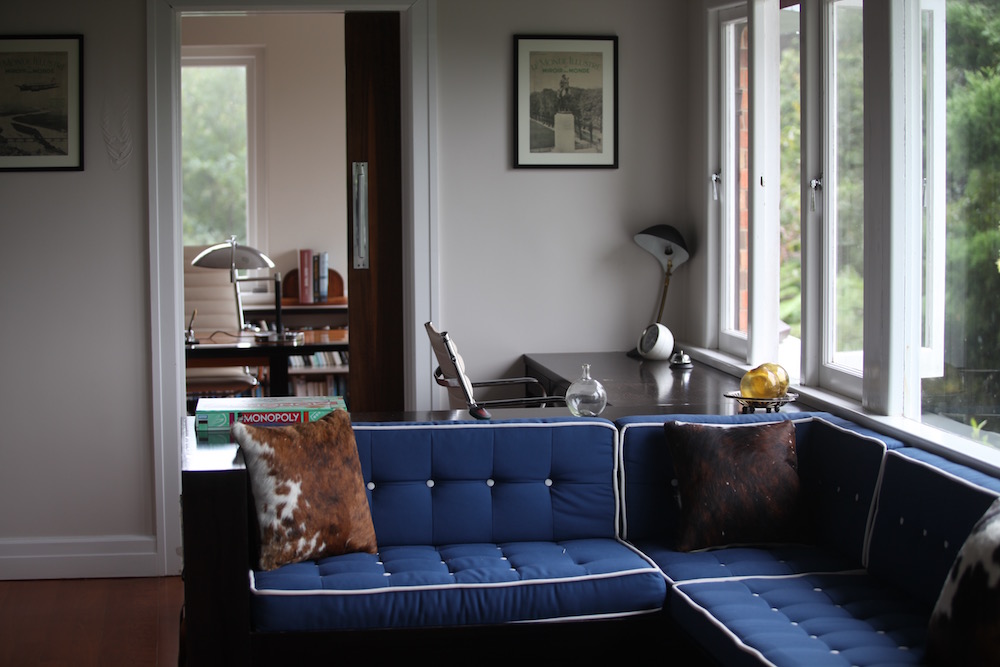
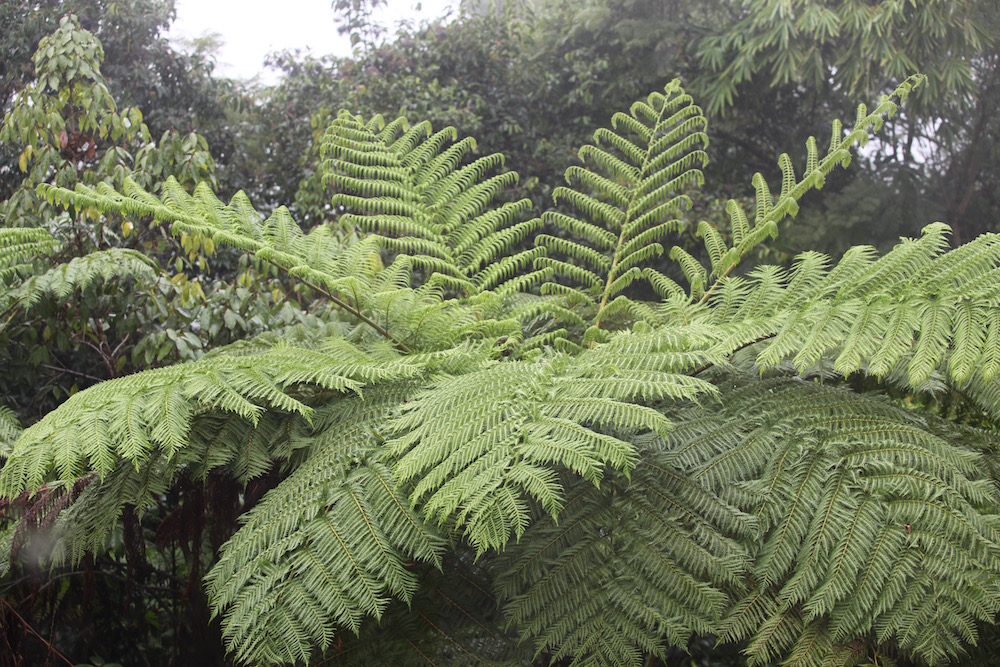
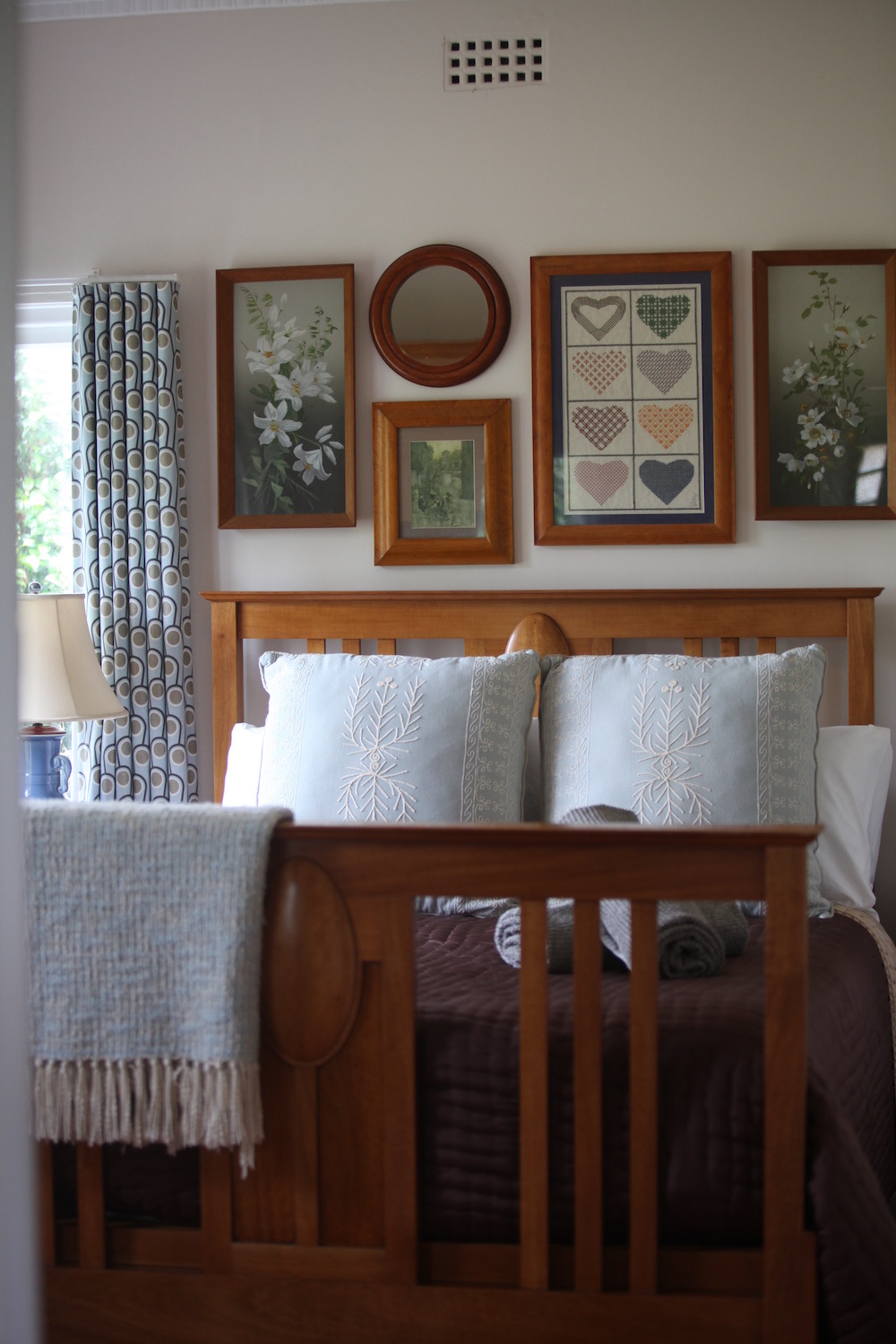
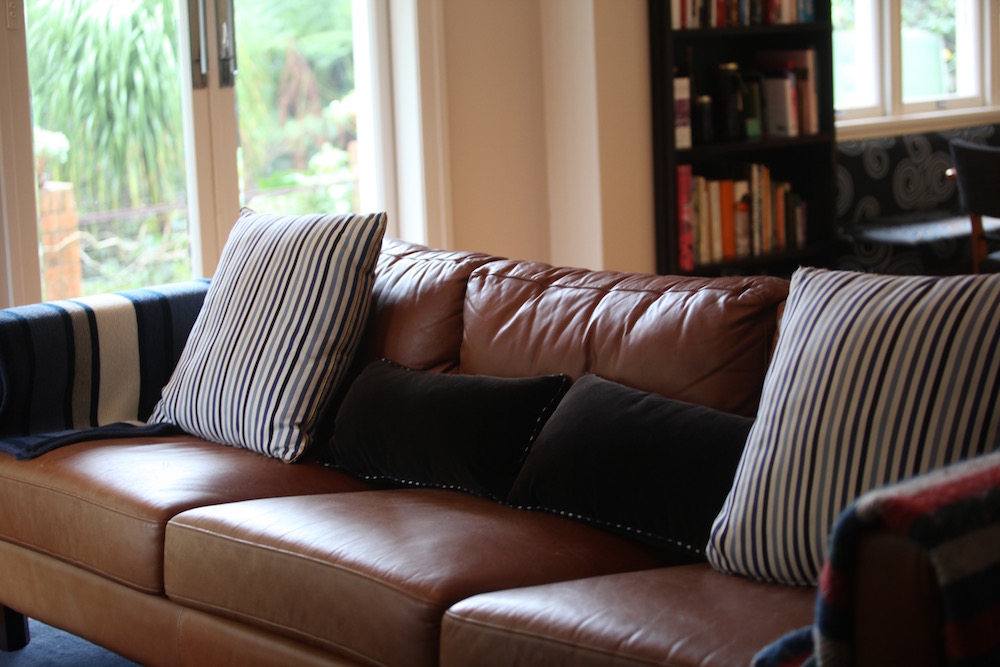
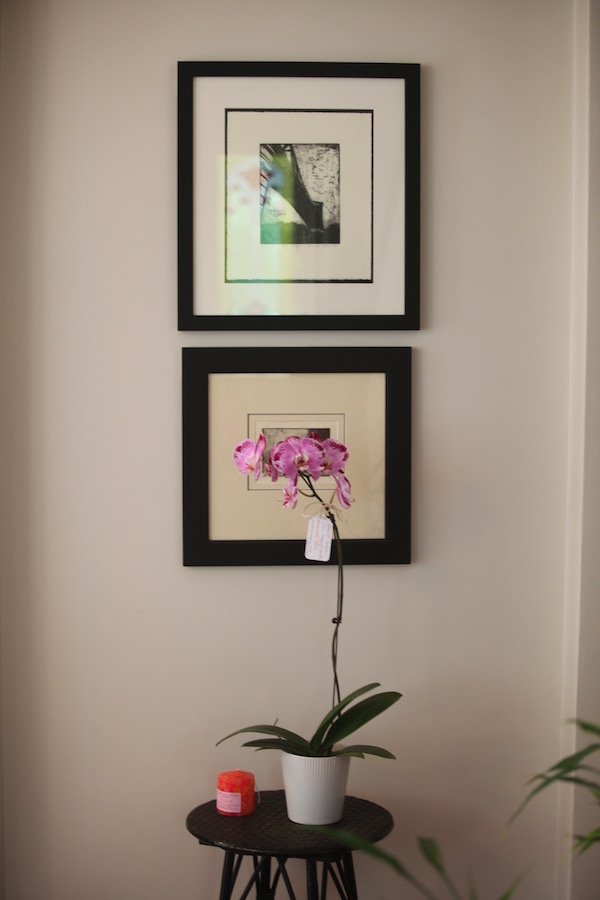
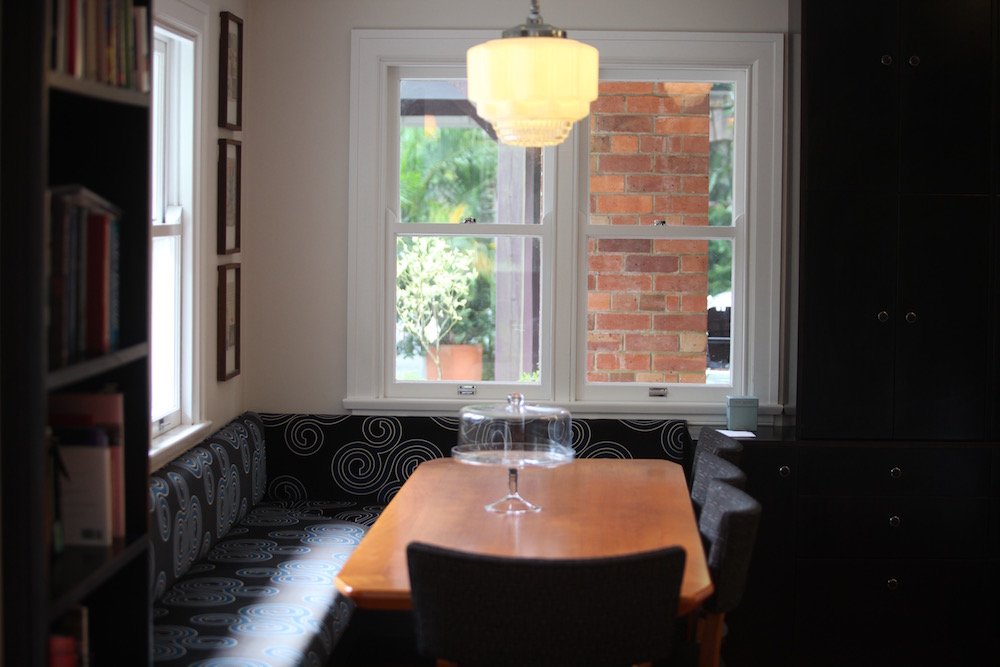
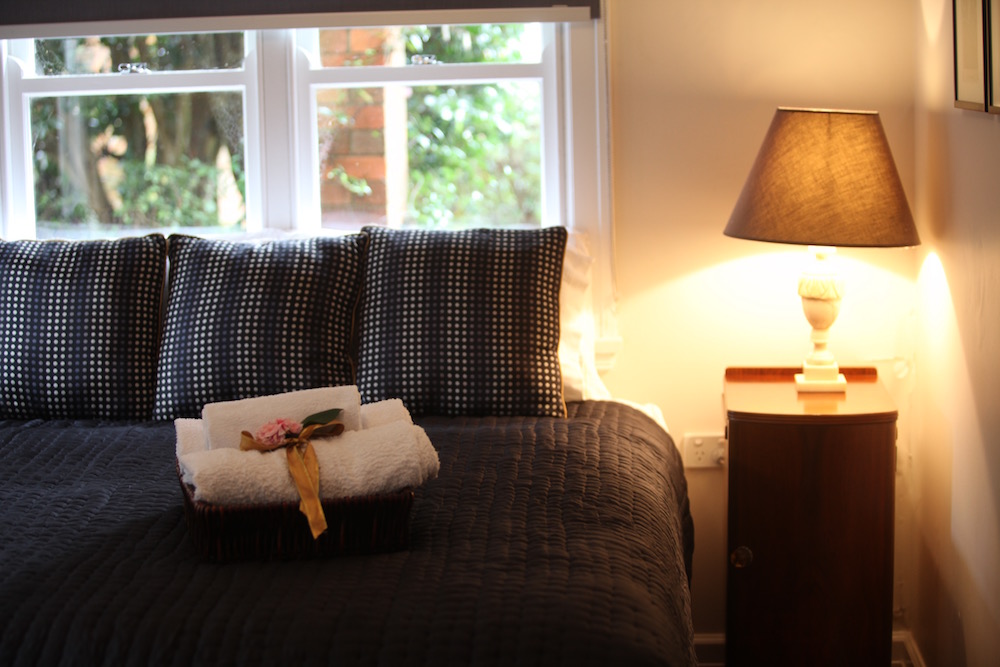
Images from Villa Margaret
To contact Fiona Porteous at The Old Blacksmith’s Cottage go to: www.facebook.com/theoldblacksmithscottage/
For more information on Villa Margaret go to: villamargaret.com.au/
The post Tranquility plus on Tamborine Mountain appeared first on .
]]>The post Marie Craven – from cattle station to cutting edge appeared first on .
]]>When film director Marie Craven moved up from her very inner-city life in Melbourne to the Gold Coast in 2002, it was a bit of a mid-life crisis for her. “I always had an odd relationship with Melbourne,” she explains to me over a coffee in the coastal town of Palm Beach where she’s now living. “Artistically it was brilliant for me, but even though I had really walked away from background in the country it was such a primal place that I think that part of me always craved to be back in big space, if you like, where you can see the skies and the horizon,” she says. “Living within close distance of Mt Warning, the ocean scapes and the hinterland of the Gold Coast, I get that space, and for me it’s been a good compromise.”
The filmmaker who has really carved out a niche for herself with her experimental videos where she works in collaboration with poets, writers, musicians, and others to create miniature works of art, first started her experimental career, long before the age of technology, as a student in Melbourne.
“I originally wanted to be an actor,” she says. “I started in the theatre when I was only 15, but then unfortunately I was diagnosed with Chrone’s disease when I was 18, which can virtually destroy your immune system and to be an actor you have to have physical and emotional resilience and I simply wasn’t strong enough, so I began to pick up media studies, and it wasn’t long before I was making short Super8 film.”
Melbourne’s grungy inner-city life quickly brought out the avant-garde in the country girl, and studying with filmmaking legend Arthur Cantrill, AM, further cemented her desire to make experimental films. “Film was my whole life,” she says. “I even married one of my teachers, Adrian Martin, who was a film critic for The Age, and I really plunged into the world of the Super8 experimental film. I worked in every way that you can on films, but one of the things I was very interested in was narrative form, which is not normally an experimental filmmaker’s interest. I tried to combine narrative form into my films, with quite a degree of success.”
That success included getting funding for three short films that did very well on the international circuit, and with her career taking off Marie chose not to finish her degree but supported her film-making habit through teaching and assessments.
But unfortunately for Marie, her Crohn’s Disease – which causes very painful inflammation of the intestines – kept flaring up in the hotbed atmosphere of city life, and so she decided to make a lifestyle change and head north.
Life many of us, Marie found that work for creatives was in short supply and had to set about reinventing herself in order to make a living. “I found myself branching out into all sorts of things,” she recalls. “I entered a short film in the Currumbin Film Festival, I set up my own short screenwriting course at Kingscliff TAFE, and I started doing teaching work at Bond University. I had to work very hard to earn a living – I was even doing data entry for some lawyers in Brisbane, and at the same time I was starting to do the occasional video project. Because I’d always been a director I’d never been really hands-on with the computer, but as I learned more about it, I started doing some quite wild experiments with what you could do, which really took off in about 2007.”
One thing led to another, and Marie soon also found herself immersed in a whole new world in which working on the internet with people around the world offered her a way of combining all her film and dramatic interests with extra layers of music, vocals and experimental video techniques. “I partnered with a musician from Cardiff, Paul Foster,” she says. “We started a project called Cwtch, which is a Welsh word meaning hug, or safe place, and we’ve now been working together for some years, creating music and video collaborations.”
I first discovered Marie’s work after she had put a poem by a mutual friend – poet Amanda Stewart – to music. Often Marie is inspired to work on spec, and hope that the people whose work she’s adapting enjoy it. “I love the process of making these videos anyway,” she says, “and when I present them to people they seem to really appreciate them.”
Our introduction led in fact, to our own collaboration of videos she created to two of my poems, which in turn led to an invitation for both of us to work on an international poetry project with well-known UK video and poetry collaborators Helen Dewbery and Chaucer Cameron (elephantsfootprint.com) which will be released in the next year.
Poem: Kim Mannix makesmesodigress.com Music: Adi Carter soundcloud.com/adicarter
Images: Flickr Creative Commons; Video and Voice: Marie Craven pixieguts.com
Talking to Marie, it strikes me – not for the first time – how curious it is the way that our lives ‘shape’ us. Her early years in isolated country seems to have given her a rich internal life – what she describes as her “dreamscape”; her years in Melbourne gave her work an intellectual edgy quality; her move north necessitated a new way of working – one that led her to discovering a ‘family’ around the world. “I think moving north was very instrumental for me in breaking out of the way I’d been working into these new collaborations,” she says. “It informed my work in two ways – I was inspired by the light and the landscape I found myself in physically and at the same time I had to find a way to connect with creative people to stay sane.”
Over the past year, since I first worked with Marie she’s notched up some extraordinary achievements including winning the recent Ó Bhéal International Poetry Film Competition. Her films have also been screened at festivals around the world, in Portugal, Spain, Germany with the UK and the USA on the cards for later this year. Her latest project, with UK spoken word poet Lucy English, entitled The Last Days, has just been completed.
Marie is truly an example of how international borders these days mean nothing to the creative universe as she continues her worldwide collaborations from her home on the Gold Coast.
You can see Marie Craven’s work on vimeo here: vimeo.com/mariecraven
For our collaborations go to: vimeo.com/174154097 (In the Forest) and (In the Temple) vimeo.com/176593832
The post Marie Craven – from cattle station to cutting edge appeared first on .
]]>The post Only THREE places left for the next Creative Courage course appeared first on .
]]>What exactly is creativity? Or, even more importantly – what is our own unique, individual creativity, and how do we tap into it, to find a deeper, more authentic way to live. Creativity helps us see the world in new and different ways – to use an abstract, conceptual way of thinking that helps us bring surprising solutions to our problems.
Writing is one of the most powerful ways to access creativity – of all kinds.
Through writing we can access the deepest desires of our soul and bring them to the light. So bring your Creative Courage to the table, and join us in a six-week feast for the senses!
What previous participants have said:
“Inspirational,” India Morris, Australia
“The entire course was bliss – from the first moment to the last,” Cecilie Brown, Spain
Candida Baker is a writer, publisher, editor and ‘horse listener’, and
the author of numerous fiction, non-fiction and children’s books.
Her latest book is Belinda the Ninja Ballerina.
She holds an MA in Art History from the University of Adelaide.
For more information email Candida on: [email protected]
Or call her on: 0401056894. Websites: www.candidabaker.com
Date: Tuesdays from February 28 – April 11, 2017
Time: 7.30-9.00pm viagra sans ordonnance online Cost: $400
The post Only THREE places left for the next Creative Courage course appeared first on .
]]>The post The ring circle of life appeared first on .
]]>I can still remember when and where I bought my favourite piece of jewellery, a large amethyst and silver ring I’ve worn for almost three decades.
It was a freezing cold winter’s day in Sydney 25 years ago, and I had my then-four-month-old son in a backpack. We were living in a terrace house in Paddington, not far from Oxford Street, and even though the day was bleak, with a howling southerly, I felt the need to escape, and so I’d rugged us both up, him in a padded blue jumpsuit and a bobble hat, so that he looked a cross between a tiny Michelin man and an east-German refugee.
As we walked up to Oxford Street, the shops seemed suddenly to be places of immense cheer. I stopped and looked in all the windows, inhaling the idea that the world at large was still going about its business even if I was exhausted and preoccupied with nappies – and naps.
We passed a smart clothing store, the kind I frequented often before getting pregnant, and even if I too was rugged up in utilitarian jeans and jumper, I thought it would be a nice idea to walk in, to gently wave my hand through rows of dresses, perhaps even to try something on and see if my figure had fully returned.
The pencil-thin shop assistant, black dress, blonde hair, smart shoes, looked me up and down.
“Can I help you,” she said, and not even the slightest smile lit the corners of her mouth.
“That’s ok,” I said breezily, “I’m just browsing – I might try a few things on.”
She nodded slowly as if trying to suggest that she totally disapproved of the idea, whilst not wanting to actually lose a sale.
My son was burbling cheerfully in his backpack, and I put him on the ground so that I could better look at the rows of elegantly unsuitable post-baby clothes while the Pencil looked at him as if he was some alien piece of lifeform.
For some absurd reason I decided to try on some of the soft, figure-hugging dresses, an the Pencil held them at some length from her body, as she carried them into the change room for me, where I discovered that a size 10 wasn’t going to cut it – not even close and asking the Pencil to get a size 12 for me, I caught a sudden look of myself in the full-length mirror.
The maternity bra, the op-shop jeans, the thick winter socks were all off-set beautifully by a pair of men’s underpants, which I’d discovered when I was heavily pregnant were much more comfortable than women’s nether garments.
“I’ve changed my mind,” I called out of the curtain into the brightly lit wood panelled room, and scrambling into my clothes, hefting Sam back onto https://www.viagrasansordonnancefr.com/ my back, I dashed out of that shop like a frightened rabbit. As I walked up the street, I could almost have shed a tear or two – for my old self, my figure, my past lack of baby accessory. We passed a jeweller’s shop with a closing down sale, and it occurred to me that if I wanted to spend some money, a piece of jewellery might be a safer bet than an item of clothing right about now, and as I turned to look in the window, I saw this chunk of amethyst in a simple silver setting, gleaming at me.
Now, I’ve always loved amethyst – apparently its protective powers are particularly potent for journalists and drunks, I’d once read, and although due to the amount of drunks in my family I wasn’t a drinker myself, I was certainly a journalist, and anyway, purple has always been, along with green, my favourite colour.
It was reduced from $180 to $30, a bargain if ever there was one, and I was quickly and happily the owner of my fine new ring.
As we walked home, Sam put ice-cold tiny fingers down my collar, and I shivered and laughed, and as I laughed so did he, and so we made our way home, laughing and skipping down the street.
Now, in the intervening 24 years, I have lost a lot of things, precious jewellery from my ex-husband, the father of my two children, jewellery from loved ones and family – alive and gone – and yet somehow despite my valiant attempts to lose it, my beautiful ring survives.
Over the years it’s become a talisman. I don’t wear it when I’m out with the horses, it’s too big, a bit of a knuckle-duster really; I try to remember not to wear it to the beach, although I’m not always successful; I always wear it when I go out.
I’m not a kind owner of objects. My optometrist once said to me, “What on earth do you do with your glasses? Slice bread with them?” I lose things, and I’m clumsy, and the ring has lost some of its lustre, but it has seen me through so much – almost 25 years of experience. It has seen me through the end of my thirties, my forties, my fifties and the second year, so far, of my sixties. It has become important to me, and when I’d owned it for a decade or so, I suddenly realised how my mother must have felt when my careless teenage self persuaded her into letting me wear one of her most precious rings, an oval garnet in a silver filigree setting, and I took it off in a train toilet to wash my hands and forgot to put it back on again. At the time, in my teenage solipsism I thought she over-reacted, but now that my own sixteen-year-old ransacks my belongings, I know how she felt.
My ring, I’ve told my daughter, is sacrosanct. Not to be borrowed under any circumstances, and I hope she will take more notice of me than I did of my mother. (Yeah right, being an appropriate reader response just here!)
So the ring survives the trials and tribulations of my daily on-going life. I bought it for myself, and it’s stayed with me as I’ve evolved, and one positive of getting older is that of all the things I know, with or without my much-loved ring, I wouldn’t give a stuff what the Pencil thought of me today, or any other day for that matter.
The post The ring circle of life appeared first on .
]]>